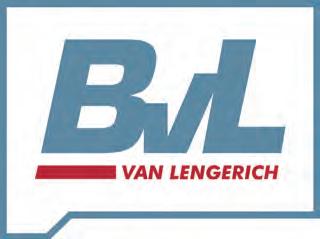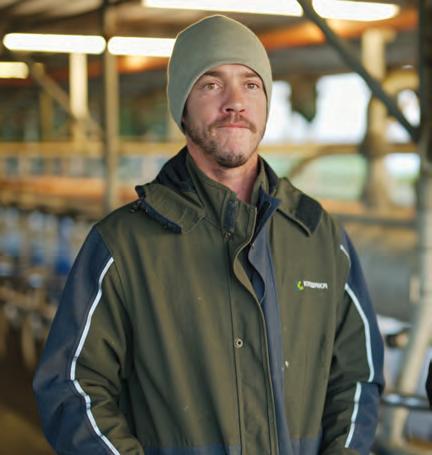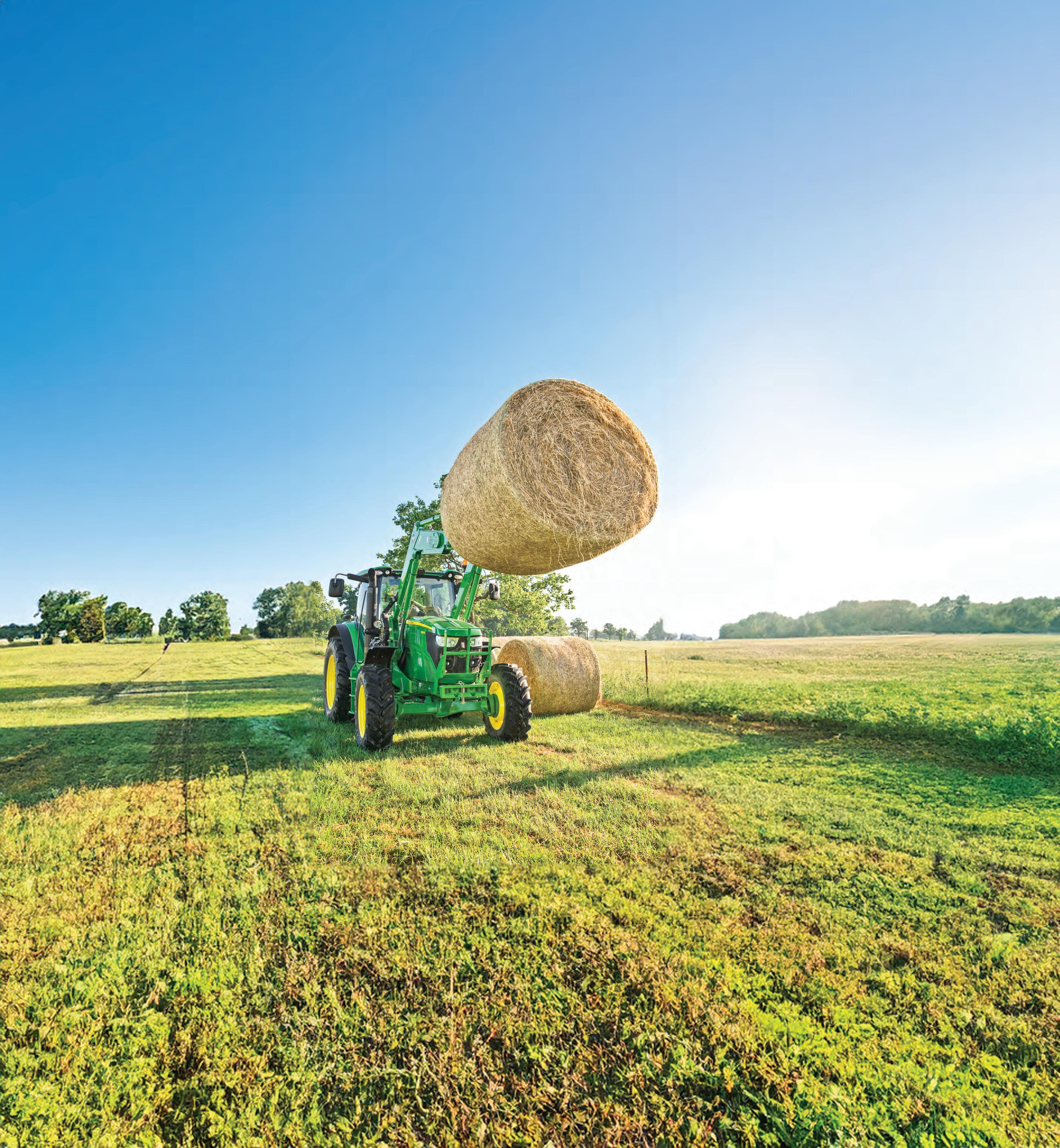




Leptospirosis
Lepto

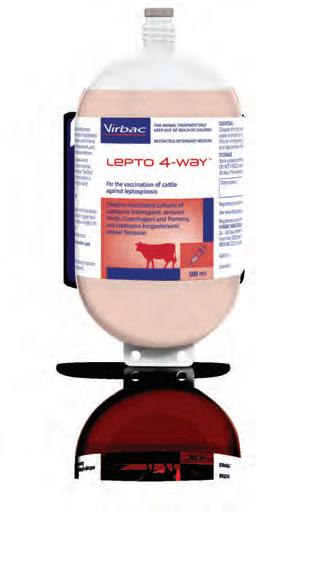









Leptospirosis
Lepto





AN INDPENDENT milk spray dryer in Hamilton, destined for liquidation, has been bought by a South Auckland goat milk processor.
New Image Group, which also makes health and nutritional products for the global market, plans to use the Food Innovation Waikato dryer at Waikato Innovation Park for its colostrum production.
The dryer, which also has a packing line, was developed in 2012 with funding assistance from the Government. It offered opportunities for speciality milk producers to scale up a new spraydried product to commercial production.
However, the plant was mothballed and was being prepared for liquidation when New Image bought it in December last year. The first milk was accepted for processing by the new owners on December 18.
New Image has an existing dryer of similar size at its NIG-Nutritionals site at Paerata. The Hamilton dryer provides processing security for both operations.
Food Innovation Waikato chief executive Trevor Lock told Dairy News that the decision has been made to keep the facility in the Food Innovation network, as an open access dryer.
“This maintains the original vision for the facility, which was as a scale-up facility for NZ businesses developing international markets,” he says.
He says New Image will shift all its colostrum
production to Food Innovation Waikato.
“This was a single focus of New Image when considering purchase of the asset. The Waikato dryer will secure supply of NZ grass-fed colostrum from the dairy cows, within 36 hours of birth of the calf.”
New Image is one of two NZ companies holding valid a Risk Management Programme (RMP) for the collection and processing of colostrum from dairy cows.
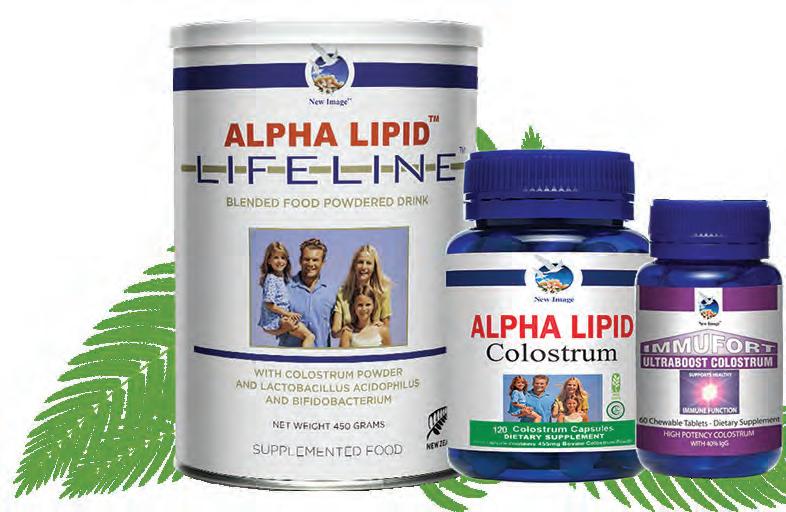
Lock says this year New Image is significantly increasing its colostrum production.
“We are looking to source from farms as far away as Taranaki and Hawke’s Bay, to supplement the supply we are acquiring in the Waikato, Taupo and Reporoa catchments.
“The product can only be harvested after the needs of the calf are met, about 10% of its body weight in the first 24 hours. Because we only harvest the first 36 hours of colostrum, there is still a further 48 hours of transition milk which can be used as a supplement for replacement calf rearing.
“We provide vats on farm and in return we want farmers to sign up for a five-year supply arrangement.
“We are serious about growing this business and providing an extra income stream for our
NEW IMAGE says it will support NZ businesses to grow their business for export through their just-acquired Food Innovation Waikato dryer
Trevor Lock says the dryer can process sheep, goat, cow, deer and plant-based milks
“We can also, if required process other non-dairy ingredients that can be spray dried Not only do we just make milk powders, we have the capability to produce high value infant and nutritional formulae, for all life stages
farmer partners.”
Lock says New Image is offering farmers about $42/cow, for the first 36 hours of colostrum. He says that a 600-cow herd can return approximately $25,000 to a farmer’s account.
“We know this is a huge amount of work for farmers at a difficult time of year, which is why we have set our pricing at a fair and reasonable rate for farmers. Payments are based on the IgG level in the colostrum. There are five bands, based on strength, with the top band returning $3.35 per litre and the bottom band returning $1.35 per litre. This reflects the difficulty of processing the low strength product.
“On average a farmer can, when compared to milk, earn approximately $12.20/kgMS for colostrum. Depending on the strength of the colostrum, this payment could be as high as $16.35/kgMS.”
He says Food Innovation Waikato will undergo an upgrade in the next eight months to provide further processing flexibility
“We have managed to hold on to an incredibly talented team of operators, who not only know the plant
well, but are passionate about the products we get to make
“The team have a very strong focus on supporting innovative products and can support products and development with a strong, focussed, scientific team
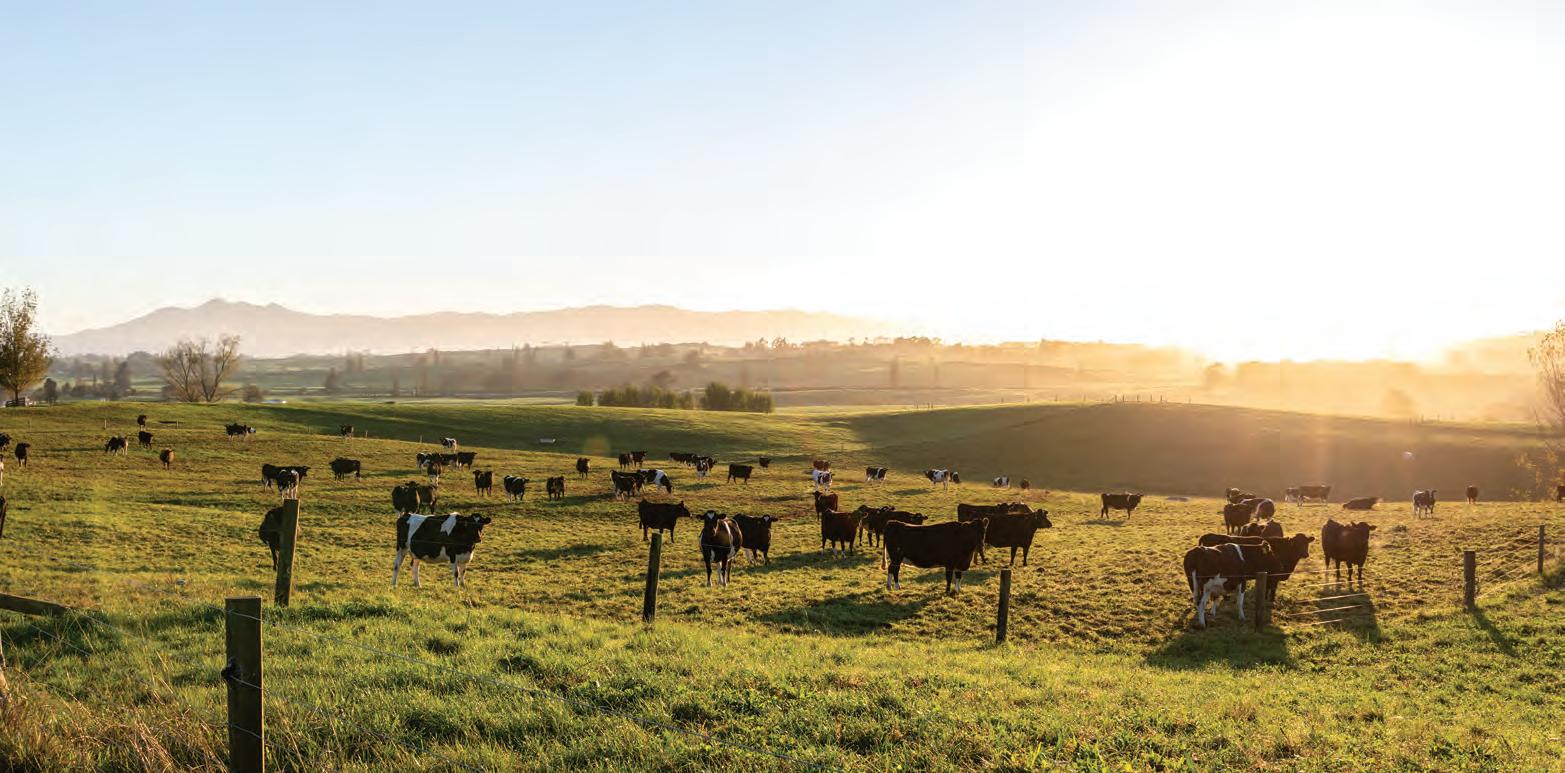
FERTILISER USE in New Zealand
over the 18 months is about 25% down from what it consistently was for the previous decade or more, says Ravensdown chief operating officer Mike Whitty.
But while there are still some unknowns, including geopolitical developments and increasing focus on greenhouse gas mitigations, he sees the downturn as stabilising.
“We’re very similar to where we were this time last year,” Whitty told Dairy News.
He says the downturn was driven by Covid and an international squeeze on fertiliser supply that pushed prices up, in some cases by up to 300%, coupled with general inflation and a levelling off some “really good” pricing that farmers had been getting for their produce.
“You’ve had prices going up, revenue coming down and the economics have flowed into a pretty average position,” he said.
“Some positives are coming through around dairy now, but sheep meat is at a seven-year low, pricewise. They are in a loss position, and they are the major consumers [of fertiliser] in New Zealand.”
Ravensdown has had to retrench, letting about 18% of its staff go over the last year.
“We’ve done that; it was challenging,” said Whitty, “But, you know, we’re in a better position as a result for whatever comes down the line.”
Whitty is confident Ravensdown shareholding farmers will see it through.
“We’ve seen it all before. This is
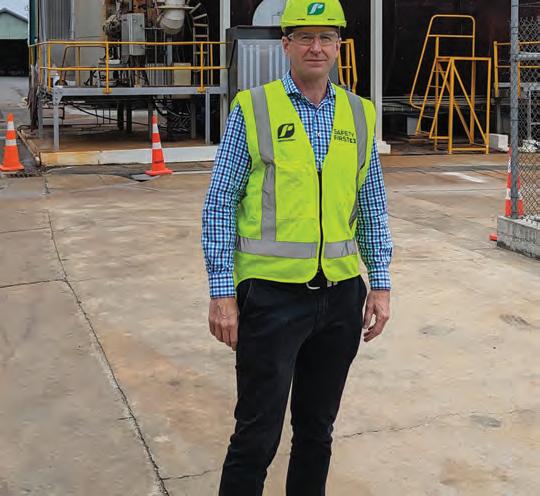
just a bit more extended.
“Back in 2008 and 2009, we saw the same occurrence. We had very high prices. And then revenue came off. Demand came off and that took about three years to rebuild.
“It’s all very cyclical. So, we’ve seen the fertiliser prices come off internationally quite significantly from where they were, and that’s starting to flow through to better prices on farm, but you need the economics to support that.
“Dairy for example is less affected because they’re in a neutral or a slightly profitable position. They’re continuing on a higher level than sheep and beef farmers are.”
Meanwhile, cropping needs annual nutrients to grow a reasonable crop so their demand doesn’t tend to change significantly.
Whitty said that putting off maintenance fertilisers would be okay for a period but would start to reduce production going forward.
“Largely, you would say that if
you didn’t use any nutrients, you’d see over time a 40 to 50 percent reduction in production. As you take nutrients out in food or fibre then you need to replace it.”
But Ravensdown would only recommend what farmers economically need, and for the production at the level they are producing.
“And of course, we will work with the farmer on what decisions they need to make, because there will be budget constraints around some of them.”
He adds that Ravensdown has a large environmental consultancy team to support farmers in meeting their reporting obligations to councils, milk companies and irrigators to show they improve on the efficiency of nutrient use while making sure not to have a negative impact on the environment.
While farmers are still waiting to see what the rules will be around greenhouse gas mitigation, Whitty says it is international customers
such as Nestlé and Danone, that drive what’s happening here, by putting their expectations onto us.
“The likes of Nestlé come to New Zealand and go, ‘Right, we want to see what you’re doing about your footprint and the environment’.
“So they’re actually starting to incentivise better practices and supporting good practice. We’re really starting to see that it’s the customer that’s moving us forward around outcomes.
“That’s where the likes of urease-inhibited urea – N-protect – and the low-carbon urea, those sorts of things, are all seen as positive to reduce greenhouse gas emissions.”
Whitty said the low-carbon urea brought in last year from the Saudi supplier Sabic was already getting interest from farmers. The N-Protect urease-inhibitive urea that reduces losses to the atmosphere has also been “picked up quite significantly”.
Ravensdown was also doing a lot internally to make sure its own footprint was coming down, including moving away from coal use in the production of agricultural lime.
It has installed a biocombuster that uses wood to dry the rock at Dipton, and a large rock shed at the Geraldine lime quarry that will store 10,000 tonnes of rock under cover.
That will allow it to air-dry naturally and keep it dry over winter before processing in optimal conditions in summer. The move is expected to completely replace an old coal-fired drying kiln at the site, so eliminating the transport and use of about 350 tonnes of coal a year.
THERE IS increasing evidence that dairy demand is on the upswing, according to Rabobank senior agricultural analyst Emma Higgins.
She notes that while the last Global Dairy Trade (GDT) produces a drop in prices this followed six consecutive events with positive price movements.
“The recessionary fears prevalent among many countries throughout 2023 have largely passed,” says Higgins.
“We’ve also seen positive developments in China with retail and food service sales showing strength through the Lunar New Year.
“Slowing milk production growth in China means we expect imports to improve in 2024, even if they remain lower than the long-term average.”
Higgins says the bank’s expectation is that slow but steady dairy commodity price gains will materialise this year.
Rabobank has lifted its forecast payout for the season by 5c to $7.80/kgMS, to match Fonterra’s forecast mid-point. The co-op, which releases its interim results this week, will give another update on the forecast price.
While dairy prices are expected to rise, there are some things worth watching out for, including upcoming elections in many key dairy regions.
“European parliament elections are approaching in June while Americans will go to the polls to elect a new president and many members of Congress in November,” Higgins says.
“Any leadership shifts could mean new approaches to policy, including free trade agreements, sustainability policies, or nutrition priorities that trickle back to impact dairy prices.”
Sector participants will also be keeping a close eye on developments in the Dutch and Irish dairy sectors where farmers are facing lower nitrogen derogation limits that will decrease application rates of organic nitrogen from animal manure in the 2024 season and beyond.
“This will reduce carrying capacity per hectare, which could result in farmers re-balancing their herd size and/or higher costs for manure disposal,” says Higgins.
“And it’s not just the Netherlands and Ireland dealing with this challenge, with Denmark’s derogation allowance also up for renewal in July 2024.”
Other watch factors identified in the report include geopolitical conflict, weather patterns and feed costs.

DAIRY SHEEP and goat farmers are being told to reduce milk supply as processors face a slump in global demand for their products.
This month Maui Milk abruptly ended its milking season one month earlier, forcing 15 Waikato-based farmer suppliers to dry off their flocks.
Hamilton-based Dairy Goat Co-operative (DGC) is asking farmer suppliers to reduce milk supply for the next season, possibly by one-third.
DGC chief executive David Hemara told Dairy News that the reduction is necessary to better balance incoming milk against forecast product sales for 2024-25.
“This is a continuation of a cap that we have applied for several seasons and reflects changing demand levels in some markets since Covid.
“While the final amount of milk per shareholder is yet to be finalised, we have advised shareholders that we expect that they will be asked to reduce supply to around two-thirds of
normal level.”
According to Hemara, the global supply/demand situation for goat milk has been impacted by several factors including declining birth rates internationally and the collapse of the Daigou informal sales channel to China during Covid.
He says there has also been a structural change in the China consumer market where over the last four years China consumers have moved strongly to support Chinese domestic brands.
“This same impact has occurred in the infant formula segment,” Hemara says.
The drop in demand for goat milk infant formula is mirrored in the sheep milk sector.
Maui Milk chief executive Greg Hamill says Maui Milk is one of many companies being impacted by the imbalance between supply and demand for New Zealand sheep dairy products.
“I’m in constant communication with our suppliers as we work through the end of this season’s production and options for next season,” he says.
Dairy sheep farmers are paid between $15 to $17.50/kgMS for milk. There’s also a taxpayer link to the sheep milk sector. Spring Sheep Milk is 50% owned by state farmer Landcorp, which trades under the brand name Pāmu. Dairy News understands Spring Sheep has finished products sitting in warehouses as global demand stagnates.
Spring Sheep chief executive Nick Hammond told Dairy News that the primary segment of the industry where there has been a slowdown is in the China ingredients market, mainly due to recent declines in the birth rates.
“This has resulted in excess inventory as the market has adjusted. We do see this stabilising over time which is further supported by the removal of the tariff on milk powder imports from New Zealand into China from the start of this year,” he says.
Hammond points out that Spring Sheep has been aware of these dynamics for some time and as such have proactively focused on the diversification of both our products and the markets they serve.
“We have also actively calibrated
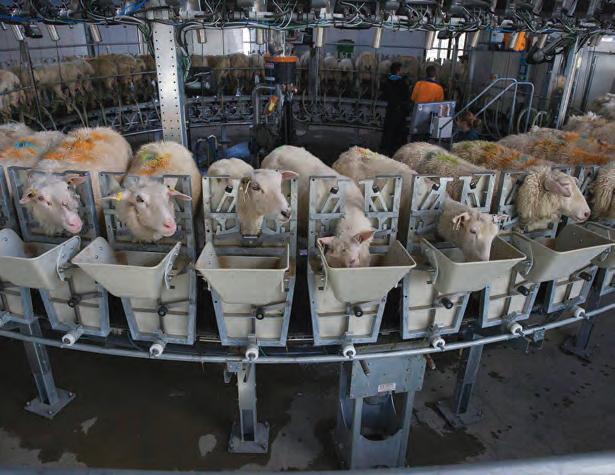
our milk production growth over time to align with the current demand from our customers and our processing capabilities. This balance is crucial for maintaining balance and sustainability of future growth.”
Hammond remains optimistic about the sheep milk sector.
“Looking ahead, we are excited to share some promising new
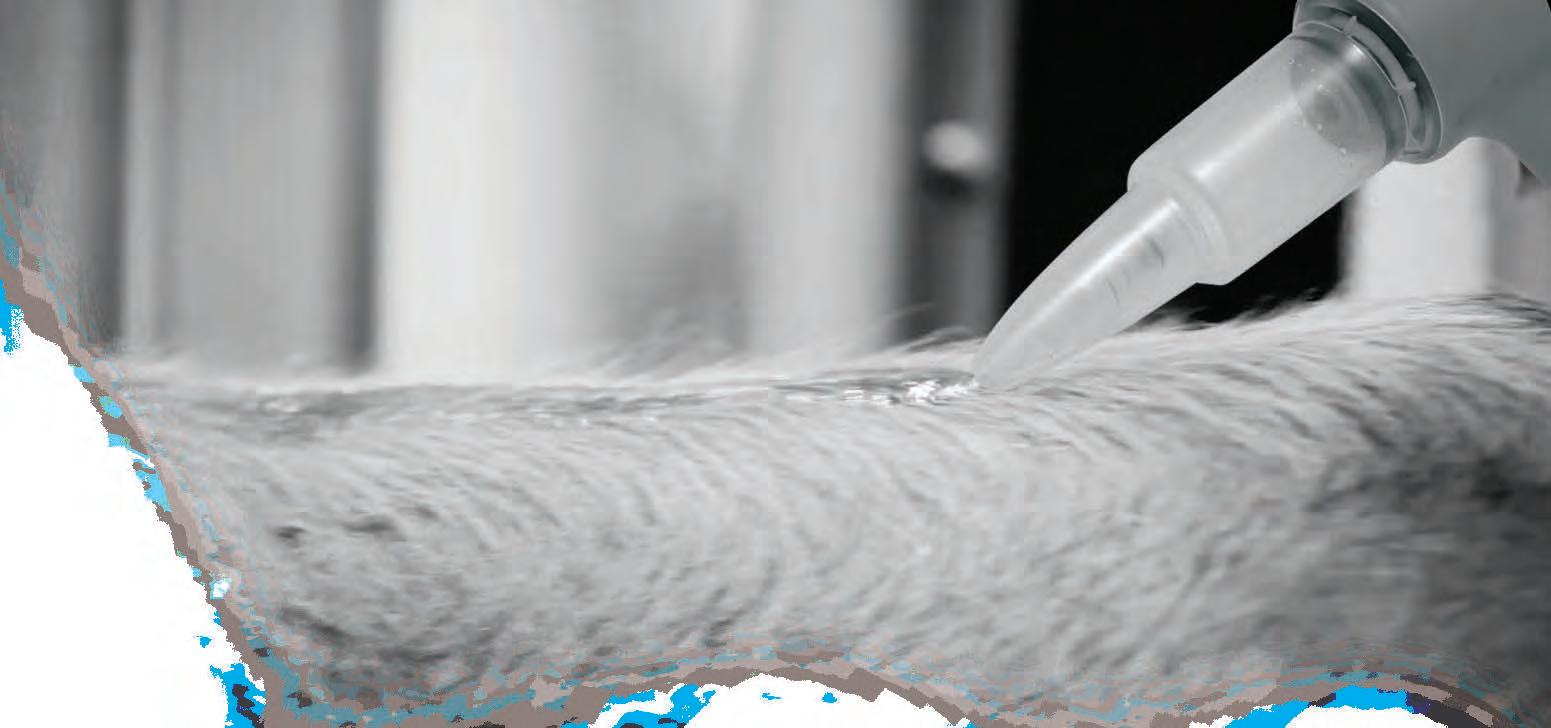


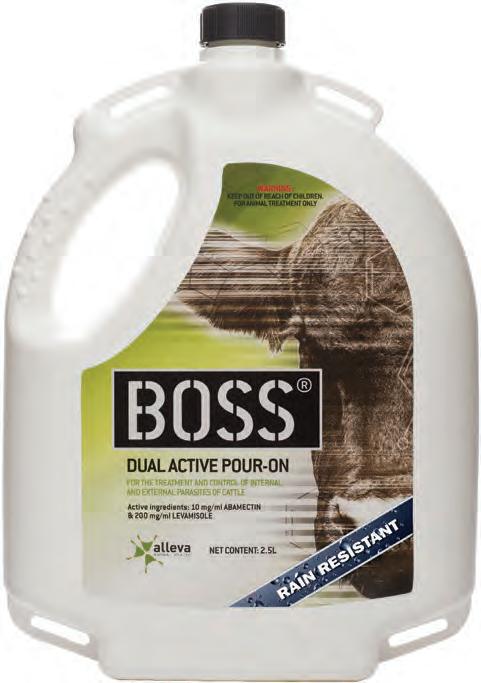
opportunities that will bolster our industry and create significant growth platforms. We will be making announcements about these developments in the coming months.
“Despite the recent challenges in some segments, we are very optimistic about the sheep milking industry and the opportunities it will create in New Zealand.”

Gore milk processor goes electric
MATAURA Valley Milk can now lay claim to be the first all-electric dairy factory in New Zealand.
The milk processor, majority owned by a2 Milk Company, has just installed an electric boiler, which eliminates about 22,000 tonnes of carbon dioxide equivalent Scope 1 emissions from the site annually. The new highpressure electrode boiler (HPEB) provides all the process heat required in the operation of the plant, which converts milk collected from farmers in its area to a range of dairy nutritional products for sale in international markets.
MVM is 75% owned by a2MC. China Animal Husbandry Group (CAHG) owns the remaining 25% shares.
Commissioning of the new boiler was marked by an event at the plant last week, hosted by a2MC’s chief legal and sustainability officer and company secretary, Jaron McVicar, and attended by community representatives including Southland MP Joseph Mooney, Gore District Mayor Ben Bell, and
representatives of the Hokonui Runanga.
McVicar says the electric boiler was a significant milestone for a2MC, as part of a group-wide sustainability programme addressing climate change and promoting nature-positive outcomes across the company’s value chain.
MVM general manager Paddy Mc Myler points out that the project is more than the installation of a new boiler.
“The opportunity to be an early adopter and use this technology to remove fossil fuels from our site was compelling. It takes an ambitious company with a proactive approach to sustainability to adopt such a technology in the early phases.”
Other benefits from electrification include the fact that the plant operates cleaner and free from coal dust, ash, and combustion; and that there is potential for further benefits founded on flexibility gains arising from the shift to electricity.
Mc Myler acknowledged the funding and other support provided by MVM’s

majority shareholder the Energy Efficiency & Conservation Authority (EECA), along with the technical involvement of project partners including Meridian Energy, Windsor Energy, PowerNet and Aurecon.
A2MC chief supply chain officer Chopin Zhang says it is investing in Mataura Valley Milk’s capability and development. This includes growing its nutritional manufacturing capability, increasing access to A1 protein free milk in Southland, in-sourcing production of specialised milk powder
products and developing new products at the plant.
“Our investment reflects the recognition that MVM is a world-class facility with potential to contribute substantially to The a2 Milk Company’s purpose – to pioneer the future of dairy for good.”
EECA chief executive Marcos Pelenur said the completion of such an ambitious project within two years shows the benefits of strong and collaborative partnerships.
“EECA has worked with MVM for several years now, supporting it with an Energy Transition Accelerator

opportunity assessment and highlighting the right energy solutions for MVM’s needs. These steps have no doubt helped accelerate the pace of change and the emissions reductions that have been
achieved.”
Meridian chief customer officer Lisa Hannifin says it’s proud to have helped Mataura Valley Milk switch energy sources.
Mataura Valley Milk claims to be the first all-electric dairy factory in New Zealand.
around 40% of New Zealand’s total gross emissions and process heat makes up a third of all energy use. So, this change won’t just benefit Mataura Valley Milk – it’ll benefit all of us.”
Commission chair Rod Carr says new evidence shows there are too many units in the NZ ETS for the Government to make best use of it to reduce emissions.
This excess number of units presents a high risk that emissions budgets won’t be achieved. To address this risk, the commission advises the Government to urgently reduce auction volumes, Carr says. His comments were contained in the commission’s latest advice to the Government.
Under the NZ ETS, certain companies and entities are required to hand in NZ units to government for their year’s worth of emissions. Units can be issued by the government in several ways: they can be bought
from government auctions, created by forestry, and in some circumstances a fixed number are available for free as industrial allocation.
For the scheme to work well, units available need to decline in line with the declining emissions reductions targets.
“We have expected for some time that there is a surplus of New Zealand Units (NZUs) already in the market and this represents oversupply,” says Carr.
“Recent data and updated analysis suggest that the surplus is larger than we previously assessed and that the change in our assessment is material. The outcomes of all four government auctions in 2023, which were declined with no units sold, support this conclusion.
“This unit surplus will not self-correct. It is critical that the Government adjust the NZ ETS unit volume limits as soon as possible to draw the surplus
down and bring the settings back into alignment with emissions reduction goals. There is scope to do this, while keeping the current price control settings essentially the same in real terms.”
This step will help the NZ ETS reward investors, producers, and consumers for actions that contribute to meeting New Zealand’s emissions reduction goals, says Carr.
Alongside having too many units already in the NZ ETS, uncertainty about the Government’s priorities is affecting market and investor confidence in the scheme. This is also increasing the risk that the Government will not achieve its emissions reduction goals, the commission notes.
The commission reiterates previous advice that the Government make clear statements about its goals for reducing greenhouse gases at their source, its goals for
using forestry to absorb some emissions, and the role of the NZ ETS in achieving the emissions reductions committed to in its first NDC.
“The NZ ETS covers less than 50% of our emissions as a nation as measured by internationally agreed measures. The way it currently operates allows action on gross emissions to be displaced by carbon storage by forests. As a country we need both and we’ll be worse off if one ends up being substituted for the other,” Carr says.
“Under its current structure, after the mid-2030s, the commission expects the NZ ETS will also no longer be able to deliver substantial incentives for the forests needed to balance difficult-to-reduce emissions. This will be an additional challenge to staying on the path to net zero long-lived emissions by 2050 and staying at net zero in every subsequent calendar year.”

footprint one third the global average, but it was important to understand why Fonterra had now set GHG targets.
FONTERRA WILL help farmers meet greenhouse gas emission reduction targets by supporting efficiency gains on-farm, says Farm Source sustainable dairy adviser for North and Central Canterbury, Sean Spence.
Spence was a speaker at a recent Lincoln University Demonstration Dairy Farm (LUDF) Focus Day, where he expanded on Fonterra’s Climate Roadmap which was publicly announced last November.
Fonterra has only recently joined SIDDC (South Island Dairy Demonstration Centre), the industry and academia partnership that runs the LUDF, and took a major role in its first farm focus day as a partner.
Spence said Fonterra believes New Zealand milk is the most valuable milk in the world due to our grass-fed farming model, which gives it a carbon
There were four key drivers, one being access to market and customers.
“The customers we sell to now have emissions targets and are looking within their supply chain as to how they meet those targets.”
Spence said Fonterra customers including the likes of Nestle, Mars, Starbucks and Unilever have all set various ambitious reduction targets that they intend to meet in the near future.
“Fifty percent by 2030 and net zero by 2050 is reasonably common and our customers are moving quickly.”
Second was access to future funding. Debt capital partners were linking sustainability credentials to loans, and that was already playing out at both farm and co-op level, with interest rate reductions being linked to sustainability initiatives.
Meanwhile, Fonterra is one of
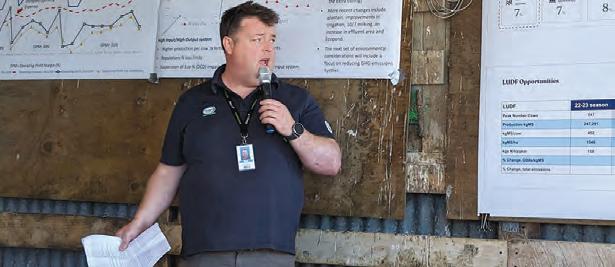
around 200 businesses in New Zealand that will soon have to report on climate risk targets and progress towards those targets, under the Financial Markets Act.
Fourthly was Fonterra’s aspiration to be a leader of long-term sustainabilitywhich was about building resilience in the business, he said.
“We’ll focus on climate, water, and animal wellbeing. Those are three areas where we believe we can lead and create that competitive advantage.”
Fonterra had announced the Climate
Roadmap at its November 2023 AGM, targeting a 30% intensity reduction in on-farm emissions by 2030 (from a 2018 baseline).
This would be achieved through a number of ways:
• 7% reduction through farming best practice such as feed quality and improving herd performance
• 7% reduction through novel technologies that we’re developing through AgriZeroNZ, the joint venture between agribusiness and Government working to find a
solution to methane, and other partnerships
• 8% reduction through carbon removals from existing and new vegetation
• 8% from historical land-use change conversions to dairy.
“This target is collective across all milk supply to the co-op. So we need individual action to achieve a collective result,” said Spence.
“We don’t really see our role as telling farmers where to focus but more of what are some of the opportunities unique to their farm?”
Under the 7% to be achieved through farming best practise, Spence said that can be organised into three key focus areas: animal efficiency around nutrition, genetics, reproduction and health; nutrient optimisation through feed type and quality, and nitrogen and ethanol management; and ‘other’ emissions, being imported CO2 from feed, fuel and fertiliser.
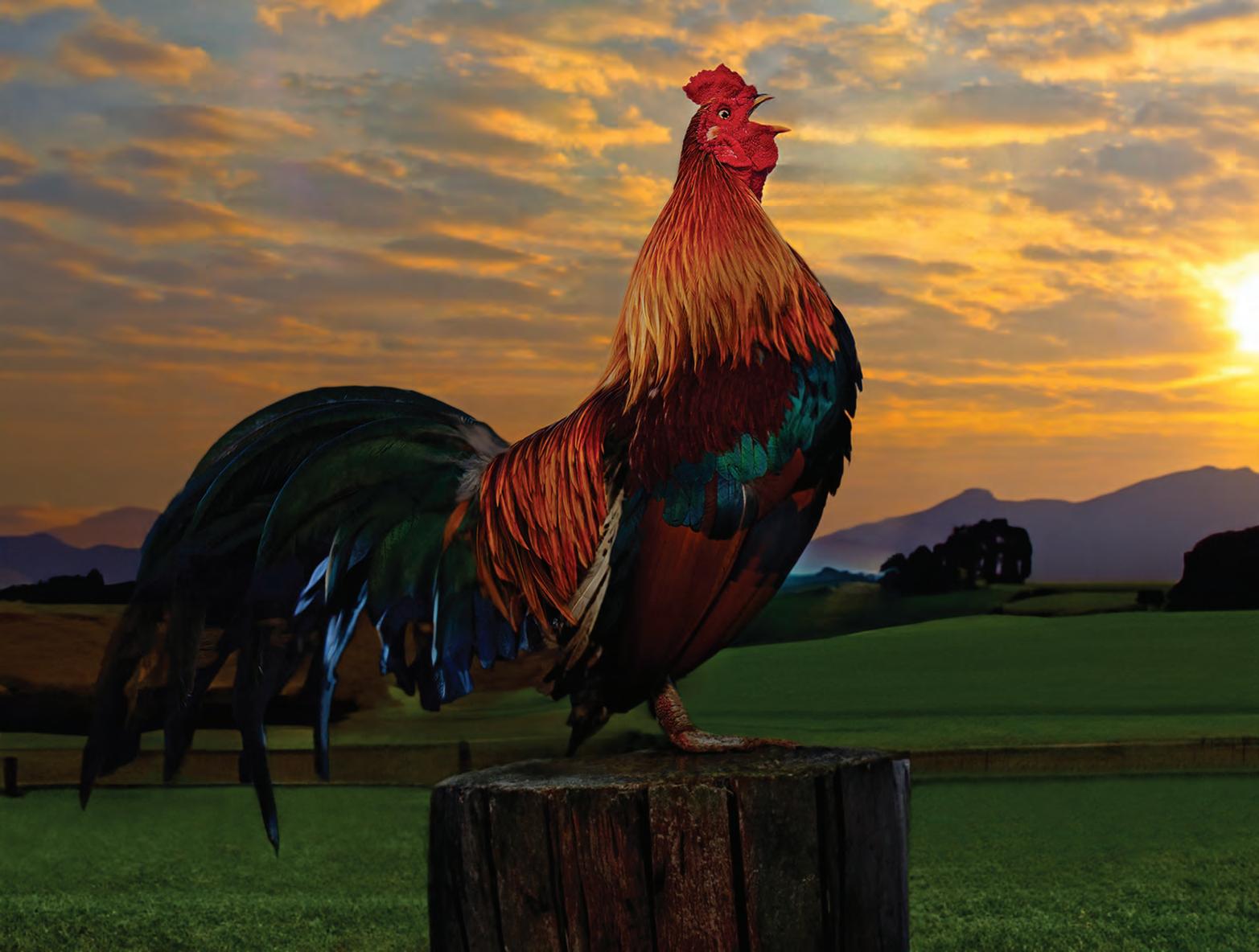
Not wanting to crow about it, but we’re pretty stoked to be named General Insurance Company of the Year by ANZIIF. Mostly because the award recognises how well we look after our clients. And at the end of the day, that’s what we’re here for. We’re also proud of the specialist advice we’ve gathered over the years to pass onto dairy farmers. Take a look at fmg.co.nz/advice/dairy for tips on everything from avoiding milk contamination to staying on top of cyber security. When you add to that the customer satisfaction awards we’ve recently been given from Canstar and Consumer, we’d have to humbly admit that we must be doing something right.
We’re here for the good of the country.

LISTED MILK processor SynlaIt is partnering with rural retailer Farmlands to deliver exclusive discounts to farmers suppliers, who have been battling high farm input costs for the past two years.
The new deal, launched recently, aims to reduce input costs and improve on-farm profitability for Synlait’s 300 farmer suppliers.
The deal includes “unique Synlait pricing” nationwide for any farmer supplier, exclusive monthly seasonal offers and fuel discounts. Synlait farmers also gain access to all of Farmland’s existing discounts and rebates through its 7000-strong card partner network. Farmlands is also offering free delivery on orders over $500.
Synlait director of on-farm excellence & business sustainability
Charles Ferguson told Dairy News that the milk processor is always looking at ways to add value to their farmer suppliers’ businesses.
Ferguson says the past 24 hours have been tough for farmers, with heightened cost pressures on farm.
“At its peak last year farmers were facing double digit rise in input costs across their business,” he says.
Ferguson says Synlait is pleased to team up with a leading agri retailer to help lower cost for its farmers.
“With 300 farmer suppliers we are always looking at how to leverage the scale and drive down costs for our farmers and our business. This partnership with Farmlands will ensure sharp deals available for our farmer suppliers.”
Farmlands chief executive Tanya Houghton told Dairy News that she saw a natural connection between the two organisations.
“As a co-op, Farmlands is focused
on enhancing the profitability and productivity of New Zealand farmers and growers.
“We’ll do this by supporting our customers to access core farm inputs – including feed, animal health, fuel, fertiliser and ag-chem – at the best price and with the best support.
“By teaming up with Synlait suppliers, we can now boost their suppliers’ profitability even more by offering them extra value across the key inputs they need month in, month out.”
Events have been held around the country to launch the deal. The final launch event takes place at Huntly Farmlands on Wednesday, March 20.
To mark the launch, Farmlands is offering a few exclusive deals including a tiered fuel pricing structure, where the more Synlait suppliers bring their bulk fuel over to Farmlands and Fern Fuel, the better the price is for everyone.
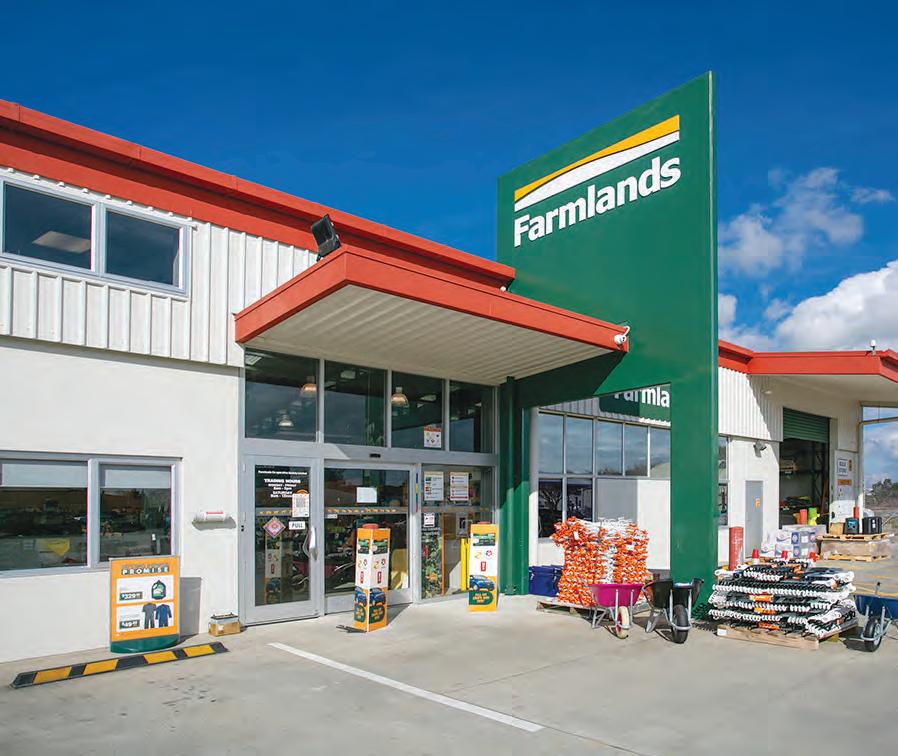
Synlait farmer suppliers who bring their Ballance account to Farmlands will get a $100 voucher. Ballance is Farmlands’ preferred partner for fertiliser.
Synlait farmers also get early-access and exclusive deals on new products like new pigtail standards due to arrive in April.
Farmlands says that as New Zealand’s largest rural supplies co-operative, it was created to disrupt the historical lock-up of rural suppliers, by using the power of a combined
buying group to reduce costs for farmers and growers.
“At Farmlands we’re proud to be 100% New Zealand owned and still working for the productivity and profitability of Kiwi farmers for the last 60 years and into the future.
“Our new partnership with Synlait will offer Synlait suppliers even more value and service on top of their existing Farmlands shareholding. It’s just one example of how we plan to bring even greater value to shareholders’ farm gate.”

EVERY MORNING dairy farmer Sam Waugh sees the Auckland Sky Tower through his window. It’s a great reminder of one of his key life goals – giving young people from towns and cities insights into farm life.
The 31-year-old runs NZ Young Farmers’ Donald’s Farm in Whitford, about 30km southeast of Auckland.
Last year, the farm hosted 900 primary and secondary school visitors, aiming to build up to 5000 a year.
“It’s awesome showing young people around the farm to learn how milk goes from grass to glass. We’re hoping to attract the next generation of farmers,” Wauigh says.
“Most of the students haven’t been on a dairy farm before so it’s great seeing their reaction when they see cows close up and check out the native tree planting we’re doing on the farm.”
Dairy farmer Donald Pearson donated Donald’s Farm to NZ Young Farmers because he wanted to support a strong future for Kiwis in agriculture.
“There are lots of career opportunities including farm assistants, managers, farm owners and rural professionals. There are also great opportunities at industry good organisations such as DairyNZ, which supports farmers with research, resources and advocacy,” Waugh says.
Earlier this month
Donald’s Farm held an open day as part of the national Open Farms initiative, where farms of all types throughout New
Zealand host members of the public to see farming first-hand.
Waugh’s love for agriculture began when he was a high school student in Kimbolton in Manawatū, working on local farms. He knew it was his future so studied for a Bachelor of Commerce and Agriculture at Lincoln University.
The
While studying, he developed a passion for community service and got involved in NZ Young Farmers, which he finds tremendously rewarding. The non-profit organisation connects and empowers young people in rural communities.
Waugh says it’s a lot of fun. “You meet a lot of great people and volunteer for awesome initiatives, giving back to the sector and local communities.”
Over six years, he chaired NZ Young Farmers’ Lincoln Club, then the Christchurch district and Tasman region, as he moved up through the organisation. He then served on the national board for two years, helping give young people a voice in local and national decisionmaking affecting rural communities.
After working as a farm consultant for four years, Waugh lived in England with his wife
Liana for 1.5 years. Sam says they had a great time exploring new places and seeing different ways of living and farming.
When they returned to New Zealand in 2020, Sam jumped at the chance to manage Donald’s Farm – his first management role.
“I get a lot of personal development out of making all the farming decisions and get a real kick out of developing the education programme with the farm’s board of directors.”
Donald’s Farm has 74 hectares and is home to 125 cows, including milking shorthorns – a rare breed on Kiwi dairy farms – and light brown Jerseys.
Future plans for the
farm include creating an educational centre for children to learn about food, farming and nature, adding to the farm’s role as an outdoor classroom.
“We’re keen to have students come back to the farm multiple times throughout their schooling to develop their knowledge of what it’s like on a farm,” Sam says. “It’s awesome to see young people grow more confident around the animals and on the farm every time they visit.”
The visits teach children about the whole agriculture sector including dairy, sheep and beef farming, horticulture and forestry. One of the programmes offered to schools involves people from more

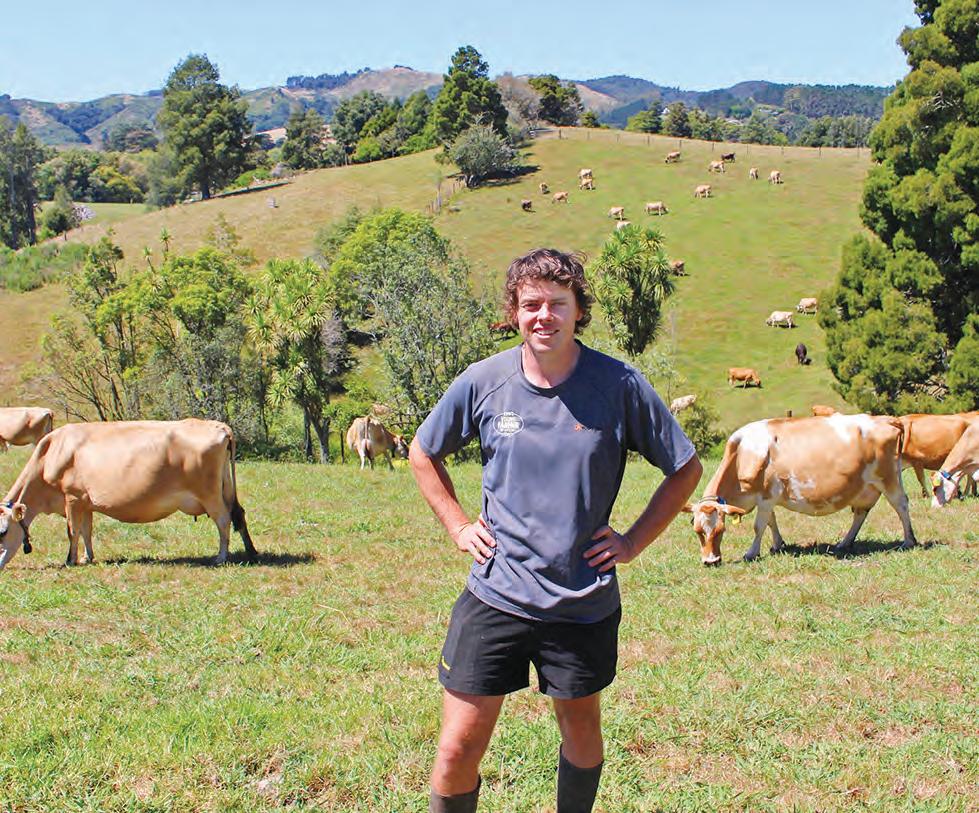
than 35 primary sector organisations showcasing the work that they do, helping to highlight the
breadth of opportunities within the sector.
“This encourages students to realise there

is so much more to agriculture than they might have realised,” Waugh says.





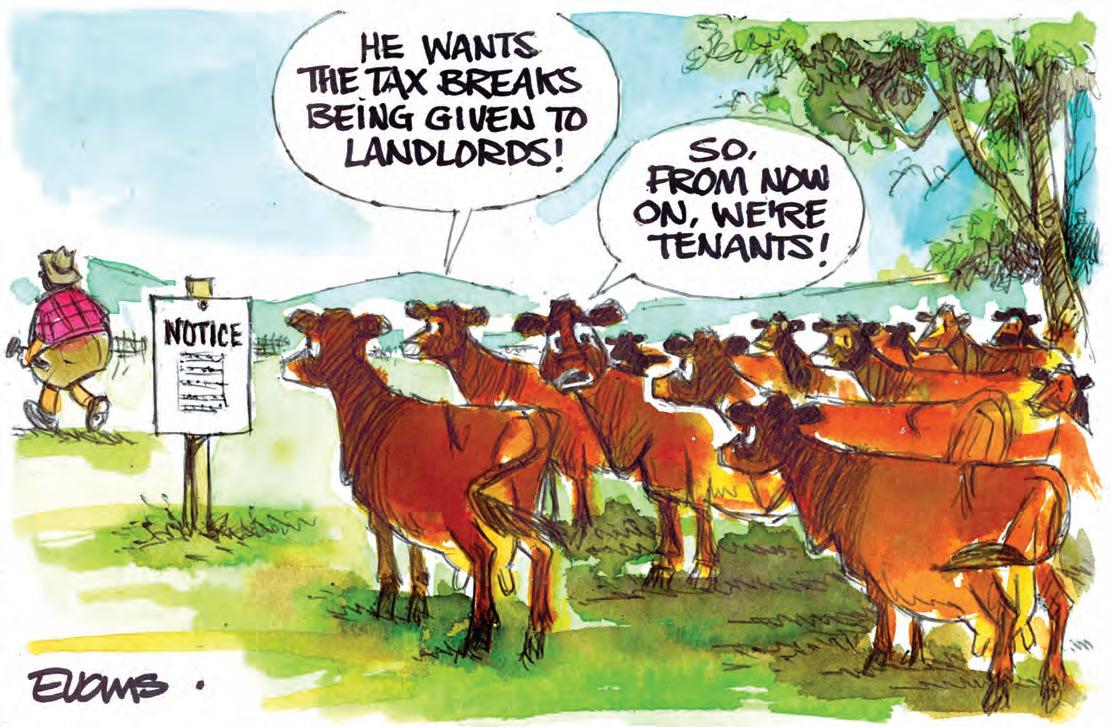
Action, not words
THE NEW Government may be farmer friendly, but it’s not love, rather action that farmers want.
Federated Farmers are applying pressure on the Government to hold an independent inquiry into rural banking.
With little movement from the Government, Feds have written to the parliamentary primary production select committee, chaired by no other than ACT MP and Northland dairy farmer Mark Cameron, considered a fervent supporter of better rules for farmers.
The message from Feds in a recent letter was, “urgently get this inquiry underway”. Cameron, a vocal proponent of farmers in Parliament, is yet to reply.
IT’S NOT just a rural banking inquiry that farmers want. Freshwater farm plans are another major headache for farmers.
Describing the current framework as “a complete dog”, Feds complain that it is incredibly expensive to write, certify and audit the plans.
To make matters worse, the rules go too far and capture all properties over 20ha, and existing industry or council farm plans are not recognised, creating a frustrating level of duplication with most farmers still required to get a resource consent, in addition to their farm plan.
Federated Farmers wants the Government to put in place a practical, pragmatic and effective system that will improve environmental outcomes while reducing the regulatory burden and unnecessary cost. Now that the Government has finished its first 100-day plan, there is hope attention will turn to righting this flawed plans framework.
THE HUSTLE and bustle of one of Bangkok’s most popular fastfood outlets may feel a world away from a typical Fonterra farmer’s operation.
Yet KFCs all over Thailand use milk from New Zealand farms, thanks to a recent custom partnership.
The key ingredient used is a cooking cream, from milk that is powdered, and then shipped to the Netherlands to be processed.
This specialised product, created for KFC but now spreading to other restaurants, makes Portuguese egg tarts –a permanent dessert item on the chicken outlet’s menu.
The egg tarts are just one example of Fonterra’s somewhat invisible efforts in Thailand to move milk into the country through its food service division.
And KFC is but one of 9000 outlets Fonterra says it services in the kingdom.
EUROPEAN FARMERS are going to extreme lengths to have their message heard. As part of the protests that have erupted in many other European countries, hundreds of farmers and their tractors have gathered on the outskirts of Rome. They demand fair prices for their products, the continuation of the reduction of taxes on agricultural diesel, stricter controls on imports, a reduction in bureaucracy, as well as other concessions.
Media reports say a cow was among thousands of the faithful, and tourists, in St Peter’s Square in the Vatican on Sunday to attend the traditional Angelus prayer of Pope Francis.
The cow, ‘Ercolina’, which has become one of the symbols of the protest in Italy, was led along Via della Conciliazione and then arrived in the piazza to be milked, to the amazement of those waiting for the Pope to appear at the window of his study.
“I hand wrote a letter to Pope Francis asking if we could come to the Angelus to have the cow blessed,” breeder Pietro Tavazzani said. The Pope agreed.
FARMER CONFIDENCE is on the rise.
While concerns remain on farm around high interest rates, poor commodity prices and excessive red tape, the good news is that farmer confidence has risen from last year’s record lows.
However, the rural sector isn’t out of the woods yet. While Federated Farmers’ latest Farm Confidence Survey may show that there has been a positive shift in the rural mood since 2023, when confidence reached its lowest point in the survey’s 15-year history, tough times prevail on farm. Farmers are struggling with high inflation, high interest rates and lower commodity prices, and the impact of those on their profitability.
According to Federated Farmers, most farmers are still feeling that general economic conditions are bad, and most are still making a loss.
The survey shows that the four greatest concerns for farmers are debt, interest & banks; farmgate & commodity prices; regulation & compliance costs; and climate change policy & ETS.
The Government, nor anyone else, can do much about farmgate and commodity prices, there’s still a lot that can be done to alleviate farmer concerns around banks. An independent inquiry into rural banking would be a good start.
One reason farmer confidence is rebounding is the new Government, which includes a record number of farmers, is talking about real commitment to roll back some of the more impractical and expensive regulation that’s undermined farmer confidence. But farmers want to see action.
Farmers are optimistic they will see confidence continue to lift in the year ahead, helped by an easing of unnecessary regulatory pressure on things like unworkable freshwater rules.
It’s all about cutting red tape, making compliance on-farm easier, and getting the primary sector humming again. But for that to happen, the Government must come to the party. The primary sector will be watching closely.
AUCKLAND SALES REPRESENTATIVE:
Stephen Pollard .............................................Ph 021-963 166 stephenp@ruralnews.co.nz
WAIKATO SALES REPRESENTATIVE:
Lisa Wise ........................................................Ph 027-369 9218 lisaw@ruralnews.co.nz
Postal
:
Printed by: Inkwise NZ Ltd Contacts: Editorial: sudeshk@ruralnews.co.nz
Advertising material: davef@ruralnews.co.nz
on-line: www.ruralnews.co.nz
Subscriptions: subsrndn@ruralnews.co.nz
• Printed by Inkwise • Distributed by Reachmedia
WELLINGTON SALES REPRESENTATIVE:
Ron Mackay ...................................................Ph 021-453 914 ronm@ruralnews.co.nz
SOUTH ISLAND SALES REPRESENTATIVE: Kaye Sutherland .........................................Ph 021-221 1994 kayes@ruralnews.co.nz


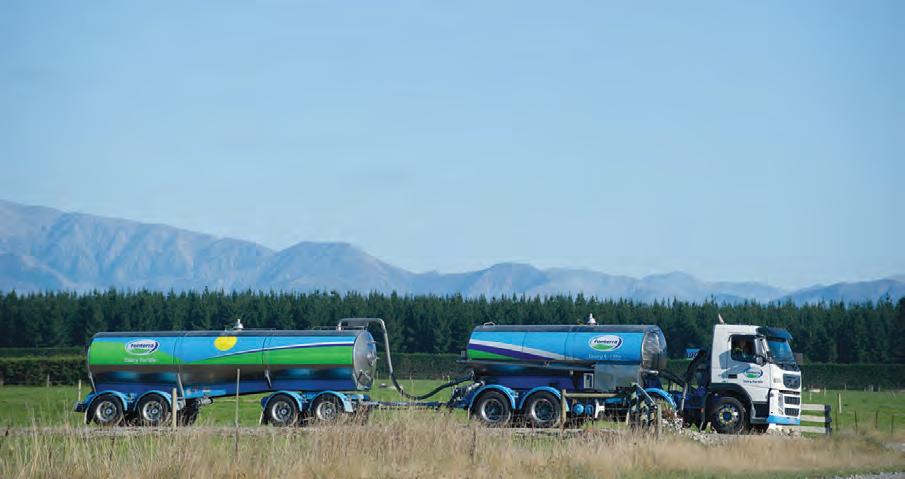

Rabobank released its Agribusiness Monthly for March. Here’s what the bank had to say about the dairy sector, farm input prices and the weather.
DAIRY COMMODITY markets have largely continued their positive trend over the month of February 2024.
Butter prices have continued to soar, lifting 12% over the month of February 2024, and were 20% higher at the end of February than at the beginning of the calendar year. SMP continues to recover, lifting 8% over the month of February 2024, while gains for WMP slowed to 1% and cheddar prices stalled over the same month.
Milk supply growth from the global dairy exporting crowd continues to struggle. A return to meaningful production expansion from these regions will take some time.
Higher dairy commodity prices will translate into firmer farmgate milk prices in all regions, a welcome relief for farmers who struggled to achieve profitability in 2023.At this stage, it’s likely that it will take until the second half of this calendar year for volumes from the dairy exporting heavyweights to move back into positive territory.
New Zealand milk supplies have pulled back for January 2024 compared to last year, easing by 1.2% YOY on a tonnage basis, while milksolids similarly declined by 1% over the same period. Milk supply is 0.5%
down YOY for the season to January 2024, largely driven by weaker North Island collections.
Despite the struggling milk pool growth, sluggish demand remains the key influence on commodity prices and, therefore, farmgate forecast prices. Pockets of demand optimism remain in our key market, China. Retail and foodservice sales showed some strength through the Lunar New Year – although it is too soon to declare a trend.
The recent equilibrium of weaker supply matched by weaker demand will slowly shift throughout 2024, with prices moving to the upside as milk production continues to struggle but demand subtly improves.
The global farm inputs market is facing pressure on two fronts: steady supply and lack of demand. So far, prices have not increased substantially as they usually do during the Northern Hemisphere procurement period. If attacks on Red Sea shipping do not escalate further, we can expect lower farm input prices at the farmgate in the coming weeks.
The first two months of 2024 saw international phosphate fertiliser prices virtually stable. The DAP reference price in Morocco dropped only USD 15/tonne in the period. The
glut supply may even get bigger now that Chinese authorities have confirmed their 2024 export quotas for DAP and MAP, which combined add up to 7m tonnes, roughly the same as in 2023. Another sign of excessive fertiliser supply came from Canada, with Mosaic announcing the curtailment of one of its potash mines. The Colonsay mine has the potential to produce 1.3m tonnes each year, almost 3% of global potash exports. As of late February, potash prices have not been negatively impacted by this decision. The nitrogen sector is also facing lacklustre demand, both for ammonia and final products, such as urea. The hand-to-mouth trend is still in place and no price uplift is expected in the coming weeks.
The silver lining is the bearish market for grains and oilseeds worldwide. Due to decreasing prices, many producers are delaying purchasing farm inputs and reassessing their crop rotations. Increasing chances of a La Niña weather event by mid2024, which can lead to crop failures in the Americas, has also boosted this behaviour recently. This can be a bullish factor for grains and oilseeds and, thus, for nitrogen demand, but is still too soon to move the fertiliser price needle.
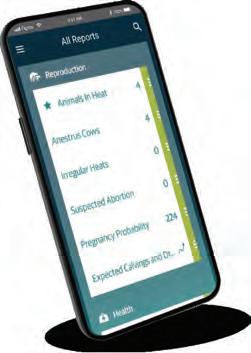
AS THE season draws to an end for spring calving systems, increased attention and planning should be focused on next season.
Figure 1 is a concept that demonstrates the shift in focus from the current season to next season, for a traditional spring calving system – i.e. in March, approximately 20% of your focus should be on the current season and 80% on next season. So, what key actions you can take at this time of year to help ensure next season is a success?
Develop a feed plan to achieve critical targets
Body condition score (BCS) and pasture cover targets at calving should be considered nonnegotiable, as they are critical to getting next season off to a good
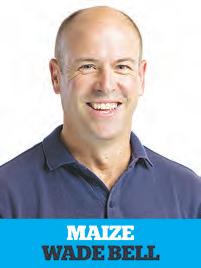
start. Known BCS targets are 5.0 for mixed age cows and 5.5 for first and second calvers, and wellfed dry cows typically gain 0.5 BCS/month up to 1 month prior to calving, although, we often see farmers achieving faster gains in BCS when supplementing with maize silage in the diet.
Optimum pasture cover targets at calving vary depending on stocking rate and calving date, but typically the target is 2200-2500 kgDM/ha. With these targets in mind, develop
a feed plan to help set dry off dates, allocate available feed (pasture and supplements) and to ensure that enough stored feed is retained post calving. If you do not have sufficient feed on hand to meet your targets, there might be an opportunity to purchase additional maize silage. With good maize growing conditions in many parts of the country it is possible that your grower/contractor may have additional maize to sell.
Review current performance and set new targets
This is an ideal time to review the key farm performance indicators (KPI’s) important to your business, and to capture lessons learned from the current season while they are still fresh in your mind.
Benchmarking KPI’s against similar systems within your region will help identify where you are performing well and where there are opportunities for improvement. Your milk supply company, breeding company and annual accounts are good sources of physical, environmental, and financial KPI’s. Often a change or improvement in one area of your business can have an impact on another. So, it may be useful to use a trusted advisor to help interpret the information, understand possible implications, and convert these into actionable changes to achieve the results you are after.
Consider market trends and new regulations
Do your research to stay informed about
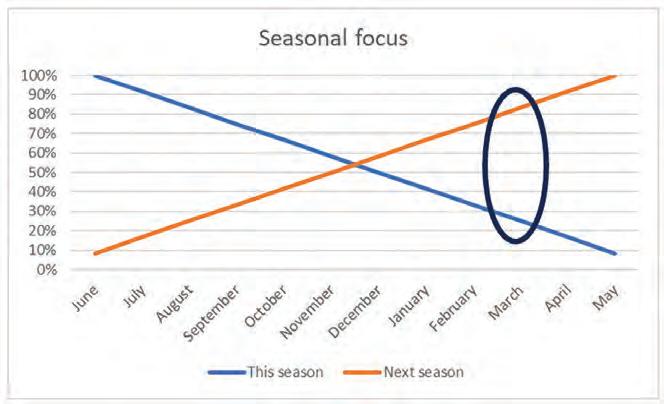
external drivers which may affect your future farm system, e.g. projected milk price, input prices and any regulatory changes on the horizon. A farmer I know who does this well once quoted former professional ice hockey player, Wayne Gretzky, “A good hockey player plays where the puck is. A great hockey
player plays where the puck is going to be”.
In farming terms this means developing a view of where the market is heading to allow you to adapt and refine your system each year accordingly.
This time of the season is a great time to reflect on the current season and take a good look at potential
improvements to your farm system. Ask your farm consultant for help or alternatively contact us at pioneer.nz. Our Farm Systems specialists Wade Bell and Matt Dalley are there to help and we are only a phone call away.
• Wade Bell is Genetic Technologies farm systems manager. Contact him at wbell@genetic.co.nz
WITH FARMERS having a bumper maize silage season this year, how it is harvested and managed will be crucial to preserving its quality and unlocking its nutritional value.
Cyclone Gabrielle and atrocious weather decimated a lot of last year’s maize crops.
Fast forward 12 months and the central and northern North Island have produced excellent crops with
farmers expecting yields in the high 20 tonnes per hectare, according to Pioneer farm systems manager Wade Bell who recently presented to the SealesWinslow team. Canterbury and the Central Plateau are also producing record yields.
SealesWinslow nutrition and quality manager Paul Drew says as harvesting gets underway, many factors can influence maize silage quality from the
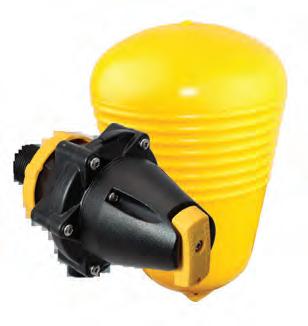
chop length to kernel integrity and how you manage your stack.
“Harvest time, longer chop lengths and cracked kernels enhance the availability of nutrients, while proper stack management, including drainage and covering, prevents spoilage and mould growth,” says Paul.
“Farmers should consider their maize silage harvest timing carefully. Maize silage
should be harvested when whole plant dry matter is approximately 35%. An indicator of this is where the milk line is two-thirds of the way down the kernel. To confirm this, a sample should be tested, using a suitable method or in a laboratory. Harvesting at the right time ensures a better silage yield, maximizing starch content and promotes good fermentation through the ensiling
process.”
Farmers should aim for a chop length of around 15-20mm for the best packing density in the stack and fermentation. Using well-maintained forage harvesters with sharp blades will also achieve a clean cut and minimise kernel damage. Proper compaction in the silage stack is also crucial for removing oxygen and promoting good anaerobic



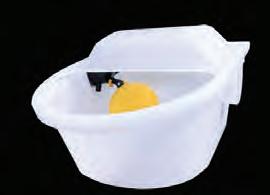
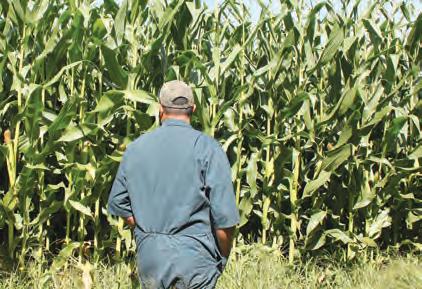
fermentation.
“It’s all about doing the basics well,” says Paul. “Use heavy packing equipment and compact

layers to achieve a dense stack. Stacks should also be well sealed to create an airtight seal and prevent spoilage.”

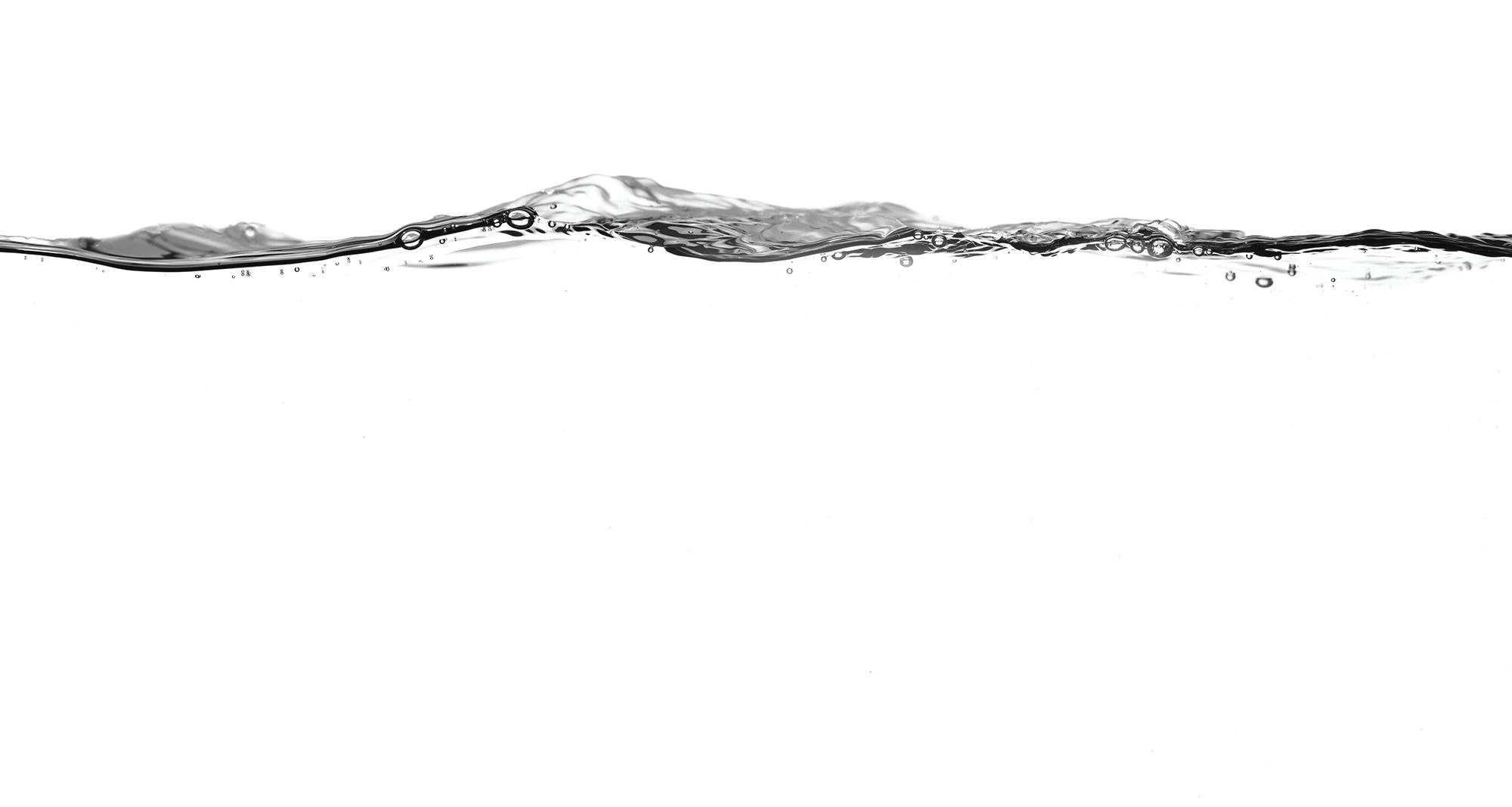
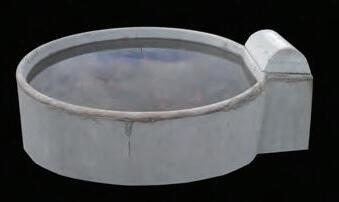
A NEW Zealand animal welfare expert has described live export of animals “a disgraceful trade”.
Dr John Hellstrom, a former chief veterinarian at Ministry for Primary Industries and chair of the National Animal Welfare Advisory Committee, told Dairy News that’s why he has launched a petition to stop a proposal by the new Government to overturn a ban on the live exports.
Hellstrom, whose role is to advise government on animal welfare standards, says the move to reinstate live exports of mainly dairy cows is a retrograde step.
Associate Minister of Agriculture Andrew Hoggard has been reported saying the Government has sought advice on any amendments, and that it would go to full public consultation.
Hellstrom has been a long-time opponent of the live animal trade and says such a move could put at risk NZ’s reputation as a primary exporter of quality sustainable products. He says both the Europeans and British will not be happy with NZ, because they are moving away from such practices.
Hellstrom says it took 40 years of arguments and debate to get the live animal export trade banned and a resumption would reduce our welfare standards. He says while
the journey on ships today isn’t as bad as the poor standards of the past, they are still bad.
“There is no doubt that cows suffer on these voyages, despite the best intentions. Even if they put weight on, they still have their social hierarchy disrupted, they are subjected to rough sea voyages, often they can’t lie down or [they] get thrown around and sometimes they have lie down in their own faeces,” he says.
Hellstrom says today it is still a two or threeweek voyage where up to eighty cows will be crammed into a containersized area. And when they reach their destination, he says they will not enjoy the protection of
OVER THE last 13 years, Southland dairy farmers Caleb and Paula Hamill have worked hard to realise their dream of farm ownership.
Setting firm goals to help fast track the genetic gain of their herd has been one of the keys to their success.
The Hamill’s own Hamkee Dairies Limited near Winton milking 465 Friesian crossbred cows at peak through a 50-bale rotary on 162 effective hectares.
For the last three years they have leased a 75ha runoff, six kilometres from the home farm where they rear 260 replacements R1s and R2s each year and winter around 120 mixed age cows.
The Hamill’s started their journey with CRV in 2018 as a Progeny Test farm. They then went on to use a nominated bull team and in recent years have explored the benefits of sexed semen.
Their farm boasts impressive production figures with cows yielding over 2.5 milk solids per cow at peak and holding well through the season. Last season, Caleb and Paula achieved production of 545 kgMS per cow, despite a drop in reproductive performance.
“Historically we’ve had an 81% 6-week in calf rate with 5-7% empty. And then, last year our 6-week in calf rate dropped to 71% and 17% of the herd was empty,” says Caleb.
“We grew a lot of feed down here last season, but I expect there wasn’t enough guts in it, and we just did too much milk. The cows
the animal welfare rules in place in NZ. Hellstrom says instead most of the animals will end up in feed lots and never see grass again.
“They will live short and brutish lives,” he says.
Hellstrom says even the best feedlot operation in the world is nowhere near as good as pastoral farming in NZ. He says if NZ was exporting to countries which had equivalent animal welfare legislation and protected farming practices, he wouldn’t be that concerned about it. But says he cannot emphasise how little concern is taken for these animals at the other end.
He says the move to reinstate live exports appears to have come
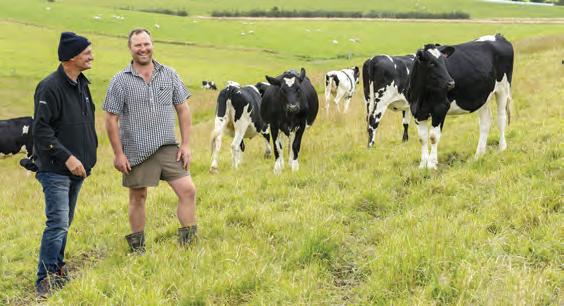
might have been full but potentially they couldn’t eat enough to get the nutrition they needed.”
This setback prompted Caleb and Paula to sit down with their CRV sales consultant Tony Watt as part of a broader review of their farm operation. They worked together to look at the farm’s goals and discuss how they could fine tune their breeding strategy to achieve them.
“Tony used to be our AI technician, so we know him well and we trust him. As an ex-dairy farmer, he knows his stuff, so we had a good open discussion about where we wanted to go and hatched a plan.”
Now, with a clear vision for the future, Caleb is focused on breeding traits into his herd such as capacity, fertility, udder attachment and rump width.
“Breeding for capacity means our cows can maintain the production we want to be doing with ease. Udder health is also important from a production point of view but also in terms of animal health and longevity. We want our best
from small minority of farmers. He’s aware that many other farmers are against live exports because they can see the potential reputational risk to NZ.
Hellstrom also questions just how much such
a trade would be worth to the NZ economy, saying the numbers he’s seen are “all over the place”.
The petition has only been going a few weeks and already Hellstrom says there has been a strong response to it. The
aim he says is to it keep in open until June before handing it into Parliament, but if the present Government acts quickly on the legislation, he will close the petition off earlier to make sure it can be presented to Parliament.
THE SPCA has come out strongly in support of the petition. The organisation’s chief scientific officer Dr Arnja Dale says photographs taken on board live export vessels have circulated the globe, showing livestock on long volatile voyages caked in urine and faeces, suffering from heat stress, injuries, and infection. She questions whether the new government learned anything from the horrendous scenes over the past month.
Dale says while Prime Minister Luxon’s Government is said to be determined to resume live exports by sea, the United Kingdom and Australia among other agri-economies have made strides towards phasing out live exports, influenced by swelling public sentiment against the practice.
“It’s excruciating that our members of parliament, many of whom love flying the flag for farmers, would willingly subject animals to grossly unsafe conditions while putting the reputation of our $54 billion-dollar wider food and fibre export sector at risk,” she says.
producers to stay in the herd for longer.
“We’re breeding for rump width to make calving easier and make sure our cows have the stature to hold a good udder and carry great body condition. Fertility is also a key focus for us, especially given our six week in-calf and empty stats last season.”
Caleb also invested in collars to aid heat detection, facilitate health monitoring, and detect issues like milk fever early on. They did 10 weeks of AI but decided not to use any bulls. A move Caleb says was driven by a desire to reduce the health and safety risk to their cows and their staff.
“We’ve changed a lot of things this year, but it’s hard to know what’s working and what’s not when you try and tackle an issue with multiple solutions. There are so many variables involved. The challenge is that one season of poor mating can affect two seasons’ production so it’s important to get the right advice to get it right.”

Pokaiwhenua
Stream is a special place full of memories for Hadleigh Putt.
The Pokaiwhenua Catchment Group co-ordinator grew up on a dairy farm bordering the stream and says the waterway was central to family barbecues, fishing expeditions, camping, neighbourhood raft races and general exploring.
“I’ve lived away from the area, but whenever I visit the stream at the back of the family farm, I feel connected to it, and to those places where so many memories were formed. In recent years I’ve been able to share these places with my wife and two boys, which is very special,” says Putt.
The stream, which flows for 56km from the Waikato River near the Mamaku Plateau to Lake Karapiro’s eastern shore, has also served as a community hub, Hadleigh says.
“Cubs and Scout camps also took place beside the stream, and it was always a place we would take visitors to, and where we’d try and catch a trout or two.”
Now Putt and the other Pokaiwhenua Catchment Group (PCG) trustees are working in partnership with DairyNZ and the Raukawa Charitable Trust to protect the waterway. Their combined work to improve biodiversity and waterway health is currently focused on the Whakauru Stream, a tributary of the Pokaiwhenua Stream adjacent to the Tokoroa Sports Centre.
The project, which is funded by the Ministry for the Environment’s Jobs for Nature programme, brings western science and matauranga Māori (Māori knowledge) together to better understand ecological health in waterways and how to improve it.
“In this early stage of the project, we are wanting to learn more about the Whakauru Stream, its history and what native plant and animal species live

within and rely on it,” Hadleigh says. “Freshwater ecology studies will help build this understanding, alongside matauranga Māori methods.”
The partnership will also see more than 15,000 new plants line the Whakauru Stream. Community and iwi planting days and pest and weed control activities are planned, and on-farm strategies to improve waterway health will be trialled and shared among farmers.
“When we have had community
planting days in the past, we tend to get a lot of local people turning up, eager to put in a few hours for a communitygood project,” Putt says.
“People often ask us to let them know when the next planting day is.
“A big component of this particular project is engaging with the community. We hope this work will provide a living example of what well-planned riparian planting can look like and be a source of inspiration for dairy farmers and the wider community.”
THE POKAIWHENUA Catchment Group (PCG) was formed in 2021, after the idea of it came to founder Andrew Lennox. It has seven trustees – including Lennox, the group’s chair – and an email database comprising most of the catchment’s 250 landowners, as well as a Facebook page.
Putt became the PCG’s co-ordinator six months ago, after chairing the group since its inception. His past experience includes more than five years at Fonterra as a sustainable dairy adviser and 11 years with Ballance Agri-Nutrients.
As co-ordinator, he organises the PCG’s various extension events, which involves connecting with host landowners and guest speakers in specialist fields. He also works with landowners around fencing and planting of riparian margins and other areas on farms best suited for retirement
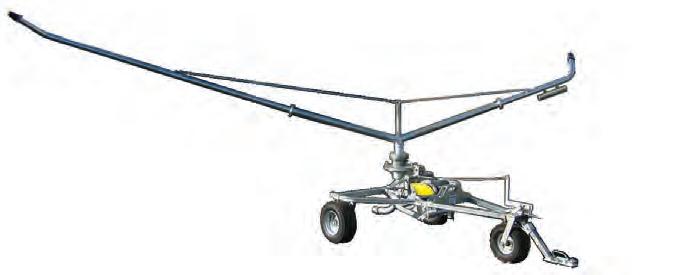

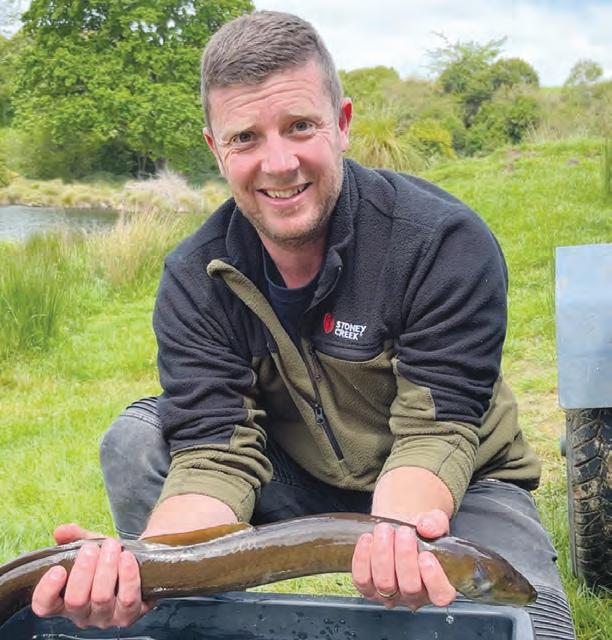
The PCG has funding from Waikato River Authority (WRA) for its work, enabling it to continue partnering with
from grazing.
This work has helped change the catchment’s waterways over the years, he says.
“The biggest change I have seen is the huge effort farmers have put into fencing waterways to exclude stock, and the many great examples of riparian planting they’ve enthusiastically established in these fenced areas in the past 10-20 years.”
He hopes farmers within the catchment will continue the great work that has been started, to lessen their impact on the waterways within the catchment.
“We would also like to see local residents enjoying the stream and taking on a guardianship role for it, and for the flora and fauna it supports.”
DairyNZ. Hadleigh says this shows the WRA’s increasing trust in what the PCG can do and is a huge achievement for the group.
“It means we can boost the DairyNZ project and work with the Syben family on the other side of the Whakauru Stream. We now have a plan in place that will see the removal of pest weed species, re-fencing of the stream for the entire length on the edge of the Sybens’ property and planting of appropriate native species to form an effective riparian buffer.”
Catchment groups have proven to be effective in bringing communities together to achieve a common goal through sharing ideas and resources, Hadleigh says. He’s a firm believer in catchment groups’ ability to bring people together to achieve multiple environmental objectives.

THE OPPORTUNITY
to spend more time on farm while providing a dedicated service for shareholders attracted new environmental manager Ben Howden to work for Waimakariri Irrigation Limited (WIL).
Ben is the first full-time internal environmental manager to work for the cooperative and he says this demonstrates the importance WIL places on assisting shareholders to meet their environmental requirements, while also responding to current and future environmental challenges.
“Spending more time out on farm with shareholders while also considering what the future holds really appeals to me. I am keen to get to know our shareholders and find out how I can help them to achieve their
environmental goals.”
Growing up on his family’s farm near Ashburton, Ben understands what it takes to operate a successful farm on a practical level. After high school, he attended Canterbury University where he gained a master’s degree in environmental science before starting his career as an environmental analyst with Rangitata Dairies in South Canterbury.
While working for Rangitata Dairies, Ben focused on providing on-farm and consent support for the company’s farming operations.
Ben then moved to Irricon where he spent five years working as an environmental consultant with a focus on consents and auditing during the time when Farm Environment Plans (FEPs) became a requirement for farmers.
“A year after I started at Irricon, Environment
Canterbury launched their FEP (Farm Environment Plan) auditing programme, so I provided practical advice to farmers and carried out audits. There was a lot to learn during this period for both consultants and farmers.”
I could gain a lot of experience and learn new skills.
“After a few years I wanted to spend more time out on farm again and being able to work closely with farmers is what attracted me to the role with WIL.”
Ben is the first full-time internal environmental manager to work for the cooperative and he says this demonstrates the importance WIL places on assisting shareholders to meet their environmental requirements.
In 2021, Ben took up a principal consultant role with Ravensdown where he led a team of consultants based in midCanterbury to support farmers in meeting their regulatory requirements and environmental goals.
“I enjoyed leading a team and had the opportunity to work in a large organisation where

Ben sees challenges and opportunities ahead for WIL’s shareholders and is looking forward to helping them navigate options for a sustainable farming future.
“Obviously we have challenges in terms of regulation and climate change, but we also have plenty of opportunities including technology and
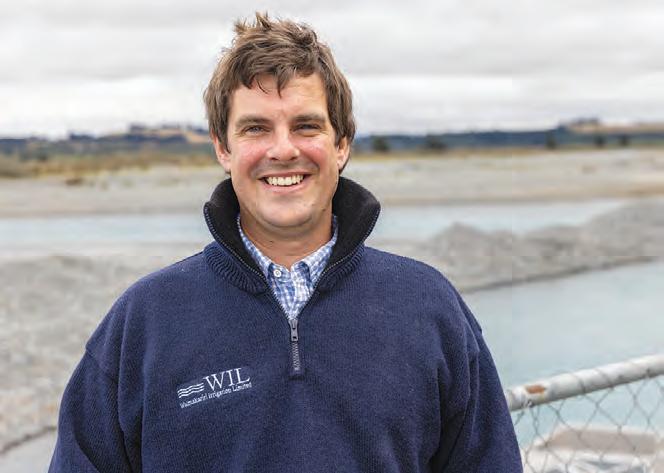
efficiency gains.
“The irrigation scheme also has an opportunity as a cooperative to secure a more sustainable and reliable water supply.”
Along with building strong relationships with WIL’s shareholders and familiarising himself with the irrigation scheme, Ben will be supporting the preparation of WIL’s discharge consent renewal during the first few months of his new

role.
When Ben isn’t out on farm, he will be based in WIL’s new office which is located upstairs in Conway Lane in Rangiora. He is happy to visit shareholders on farm and they are also welcome to visit him at his office.
“I am pretty down to earth and approachable so I hope shareholders will give me a call and I will do my best to
support them to achieve their environmental goals.”
In his free time, Ben enjoys sport and the outdoors and shares his love of nature with his young family. They live in Darfield.
“I love diving, fishing, hunting and cricket. Going away camping is another activity we enjoy doing as a family. We like to be outside doing stuff whenever possible.”










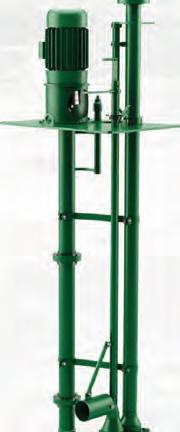
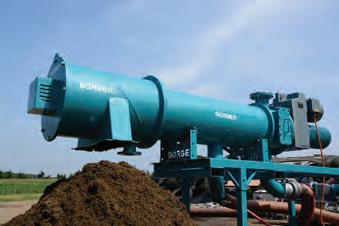



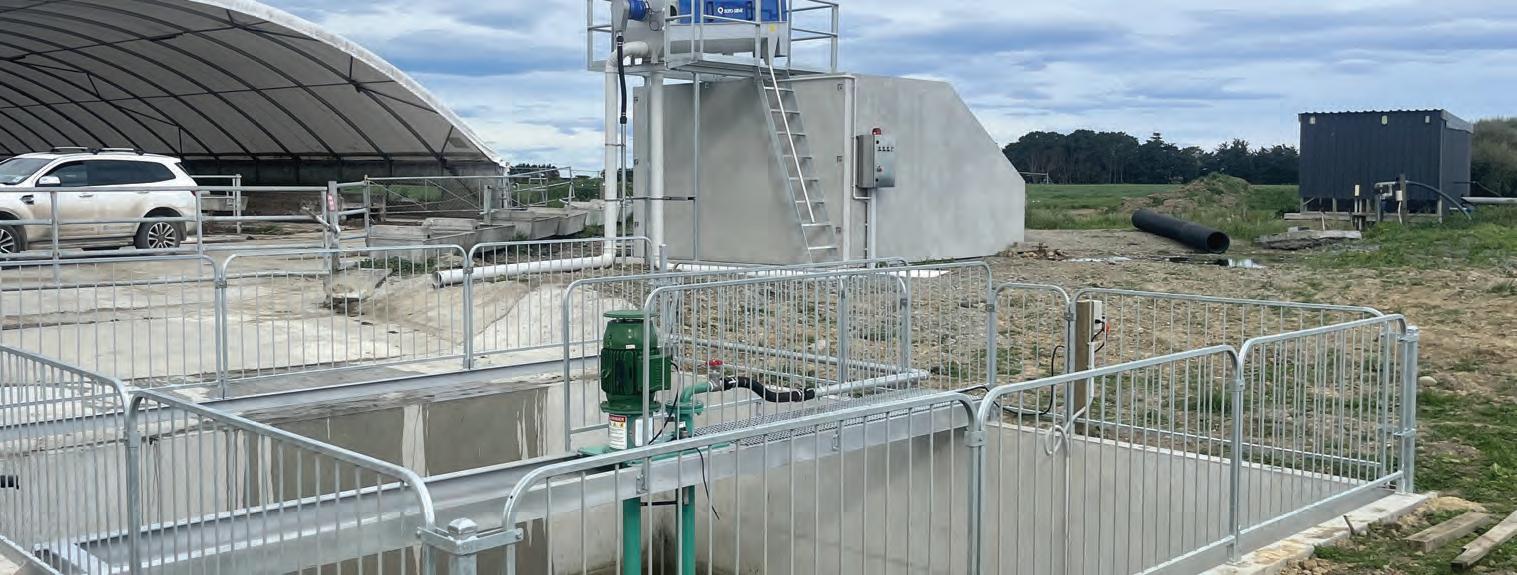











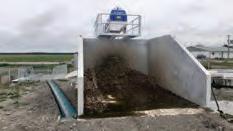


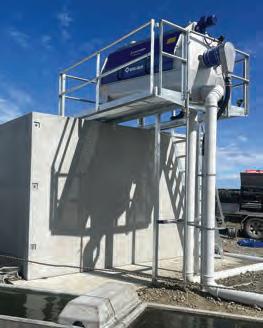



Horizons regions.
FarmIQ says its FWFP tool was developed with the aim of helping farmers with this new piece of compliance that has so far been rolled out in Waikato, Southland, West Coast, North Otago and
It says the tool takes farmers through the process of mapping their land, assessing their risks to freshwater, and building an action plan. This is all linked to a digital map of their farm in FarmIQ, making it simple for farmers, farm advisors,


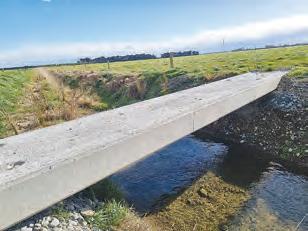
certifiers, and auditors to develop or monitor these plans all in one place.
Farmers can either do the FWFP by themselves, or if they want a bit of a hand, they can give third party access to a consultant to do some of the heavy lifting for them.
Because FarmIQ is a map-based farm management system, it forms the perfect base for the map and landunit focus of the FWFP regulations.
FarmIQ is a mapbased farm management tool that helps farmers keep track of staff management, land and feed data, animal recording and compliance information.
Executive general manager for FarmIQ, Gavin McEwen, says that it has had a longstanding commitment towards providing tools that enable better integrated farm planning.


industry’s commitment towards improving water quality, we have invested in new functionality that walks users through the requirements to create a Freshwater Farm Plan,” says McEwen.
“Building on our existing software platform, and recognising the
“It has been an excellent example of our software designers and subject matter experts working closely with government, processors, regional councils, catchment groups, consultants and, of course, farmers to create a software tool that, to date, has received excellent
feedback.”
The release of FarmIQ’s FWFP tool coincides with a new version of the FarmIQ software being released – FarmIQ Lite – which offers a cost-effective entry point to utilise FarmIQ’s interactive farm map, staff management tools and compliance features, helping users keep up with industry rules and regulations.
Current FarmIQ users can use their existing farm map with hazards, water, landmarks, buildings, etc already loaded.
Alternatively, new users can build a farm map for the purpose of completing the FWFP but can also use that map as part of their everyday farm planning and management as well.
Additionally, external mapping resources can be integrated into the FWFP farm map as a shapefile, allowing flexibility to enhance a farmer’s farm map as desired.
All versions of FarmIQ will include the Freshwater Farm Plan tool, starting at $40 per month per farm.













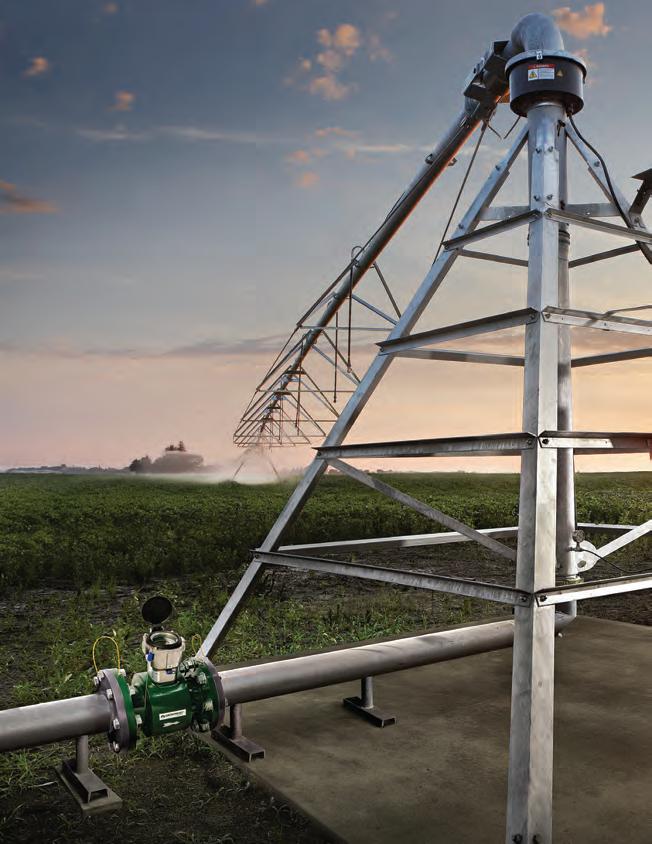
EFFLUENT SPECIALISTS the Samson Group have developed a new double unloading system to optimise uphill and downhill organic fertiliser spreading.
The ALTA system, available across the Pichon SV slurry tanker range, makes complete unloading on hilly terrain a reality, using a combination of a front unloading pipe for downhill emptying and rear unloading
pipe for uphill discharge.
Pipes are selected using two immersed hydraulic valves that are manually controlled from the in-cab iControl 7S terminal.
The ALTA system’s compatibility with the upper unloading pipe, which is linked to the flow regulation valve and turbo feeder, prevents system failures, and ensures an even and consistent spread.
Tanks will soon include an inclinometer to provide an incline reading in real time, with information sent to the in-cab iControl 7S human-to-machine interface, which will be able to automatically select the front or rear valve without operator input needed. This is aimed at reducing the operator’s workload, making it easier to drive in the emptying mode.
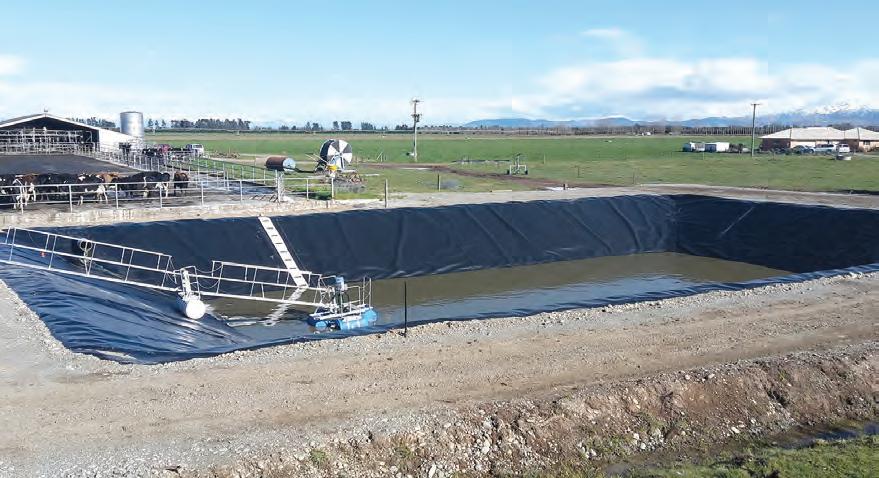

SINCE ITS release almost a decade ago, Numedic’s King Cobra rain-gun has earned a solid reputation as a productive and widely supported unit.
Designed, patented and New Zealand made, the “KC” is supported by a nationwide network of dealers offering complete spare parts and service availability.
“As an accredited Farm Dairy Effluent (FDE) designer, I always specified a rain gun where it was required,” says Marina Millar, director of Numedic.
“I gave customers a choice that included a Cobra and other alternatives, but inevitably, the choice was always a Cobra, based on the feedback our customers received from their fellow farmers.
“When we got to deliver the units, we quickly realised it was a product that is well made and easy to operate, so when the opportunity arose to purchase part of
Waikato Milking Systems effluent business, including Cobra, it was a logical step for the business. Complementary to our existing product offerings, it fills a gap in our range with a delivery capacity above our Adcam 750 twin boom irrigator.”
“As an accredited Farm Dairy Effluent (FDE) designer, I always specified a rain gun where it was required.”
Since the purchase, Numedic has strengthened its distribution, formed some great new partnerships, and continued making enhancements to the Cobra, with more innovative improvements on the way.
“We are very much a feedback-based business,” says Andrew
Millar, managing director of Numedic. “So, if our users or dealers suggest improvements or new features that will make it easier, save time or money, we will design and implement a change.”
One of the main benefits of a King Cobra K2 is its efficiency, delivered via its ability to cover large areas autonomously in a short time and moving at slower speeds. This means effluent is spread at the required depth, and frees up labour for other farm tasks, ultimately saving money.
In addition to its practical advantages, the K2 offers environmental benefits, via precise distribution, minimising the risk of nutrient leaching and groundwater contamination.
This sustainable practice helps protect the surrounding ecosystem, while also helping to ensure compliance with local and regional council regulations. www. numedic.co.nz
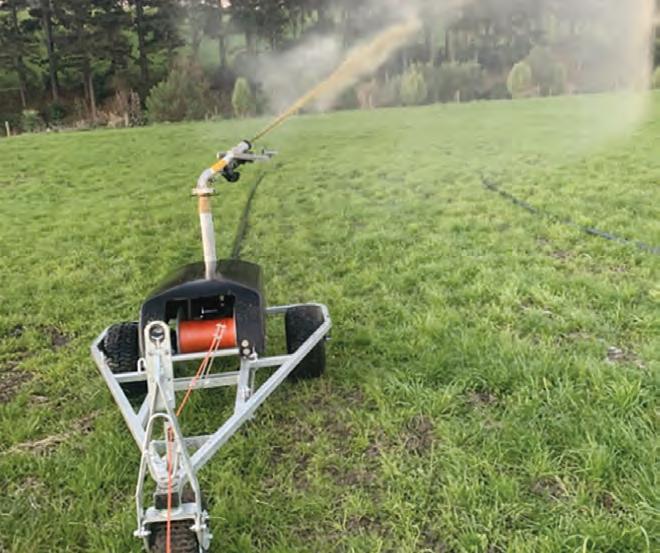

of small balloons in the feed pipes to the part of the boom that needs to be switched off, a valve system said to be unique to the company.
The system is ISOBUS compatible so may be used with prescription mapping or, in the future, a Near Infra Red (NIR) sensor such as John Deere’s harvest lab.
The double runner system will be available for the UniSpread and BlackBird trailing shoe linkage series from May 2024 and can also be retrofitted to older machines.
tanker or via an umbilical system, so took the opportunity at the recent LAMMA Show in the UK to display its new 24m BacPac Umbilical groundlevel application boom with section control and variable rate flow meter.
At the heart of the BacPac unit is a Krohne flow meter, while Section Control is achieved by the inflation
The company was also showing its DoubleFlow shoe which splits the flow of slurry, delivering two lines at 12.5cm apart, rather than a larger, more typical layout at 25cm spacing. The company claims this will help achieve a more even distribution of slurry, as well as increasing the surface area in contact with the soil and air, thereby accelerating absorption by the soil and faster aerobic breakdown of the product.
Vogelsang notes that the greatest number of complaints about ground spreading is that the process can leave unabsorbed slurry on the surface that can lead to contamination of the cut sward and in severe cases, kill off the grass. By spreading material thinner, this problem is largely avoided.
The double runner system will be available for the UniSpread and BlackBird trailing shoe linkage series from May 2024 and can also be retrofitted to older machines.


AUTONOMOUS TRACTORS are coming to a paddock near you.
And the big question is how quickly these robotic tractors will remove people from the field.
The observation was made by Scott Shearer, Professor and Chair of Food, Agricultural and Biological Engineering at Ohio State University, during his address to Foundation for Arable Research’s Maize Profit and Productivity conference held recently at Hamilton.
“Previously it was start-ups talking about autonomy but now it is all tractor manufacturers. It will be one of the things that will change the marketplace. Autonomous tractors are coming to market, with the only
question being how quickly these will remove people from the field,” Shearer told the audience via video link.
He spoke on the current and future role of precision agriculture in the US, citing the example of Australian company SwarmFarm who use the tagline ‘My Dad used to drive a tractor’. SwarmFarm’s autonomous sprayer can operate 24/7 and can automatically shut down in adverse weather.
Looking at the practicalities of using such systems, autonomous systems require 5G connectivity which is not always available in rural areas. However, some US farmers have become their own cell phone provider within a 2-3km radius, by using a supplementary antenna on a grain elevator.
Whether it is tractors, combine harvesters or drones, agricultural machinery is getting bigger, partly in response to changing weather and to maximise coverage in the field during optimal conditions.
Shearer suggested that as tractors become increasingly high tech and expensive, it is a question of how fully they are utilised, both in terms of operator ability and hours operated, to justify the cost.
“High speed planting is a real possibility with the technology working well at speeds of 10 to 16km/h. But there are challenges to moving to higher speeds in the field,” he says.
Agrichemical application using drones is also ramping up in the US where for example, in Ohio, around 25
companies are spraying fungicides on maize and soybean crops using the technology. One group claimed to have sprayed 10,000 hectares with eight drones, while another with two drones sprayed 2000ha in a 30-day window.
Of course, like the rest of conventional farm equipment, drones are getting bigger, with a Hylio AG-272 spray drone weighing 175kg when fully loaded with batteries and 70 litres of product, allowing it to deliver a 12 metre application width, spraying up to 20 ha/hour.
Interestingly, Professor Shearer also suggests artificial intelligence (AI) will assist farmers to interpret the substantial amounts of data generated using precision agriculture.
“We’ve evolved from precision agriculture to
BASED ON industry data collected by the Motor Industry Association, Can-Am is the number one side-byside manufacturer in New Zealand.
Following on from the regional field days, rural communities had the chance to experience the Can-Am products in a series of demo experience days, trialling the Can-Am Defender sideby-side.
From the HD7 through to the HD10 engine options, the Can-Am Defender has up to 82hp / 69 lb-ft, powered by ROTAX engineering. They also feature a Selectable Turf Mode / 2WD / 4WD with Visco-Lok† auto-locking front differential which is customisable for different terrains.
The PRO-TORQ CVT on HD9 and HD10 models provide improved cooling and electronic belt protection for increased durability. The Defender can tow up to 1134kg, while the Defender 6x6 boasts an industryleading 1360kg towing capacity with 6 all-terrain tires that can handle mud, sand and rocks.
Defender offers a 200-hour service interval while comfort is taken care of by the VERSA-PRO bench seats, with passenger seats that flip up allowing for more cargo space within the protection of the cabin. A range of accessories make hard work easier including a roof or windshield, both a great idea for protection against inclement weather.
The new Can-Am Outlander PRO ATV is the result of a development journey that began 5 years ago, when
GET RID OF YOUR TYRES! Use Covertex shadecloth cover to protect your traditional plastic silage covers, helping to reduce pest damage and reducing the need for tyre weights. ❱❱ No more tyre soup water ❱❱ Reduces habitat for rats & wasps ❱❱ Reduces bird damage to silage covers ❱❱ Pre-order now as covers are fabricated to order in NZ
8000m3
digital agriculture,” says Shearer.
“Digital agriculture is broader, covering everything from when the seed goes in the ground until there are end products on the consumer’s table. Everything is connected to the internet.”
Digital agriculture applies artificial intelligence and machine learning (AI/ML), to interpret vast amounts of data to support a farmer’s decision-making and improve the efficiency of farm operations.
Shearer gave the example of an AI-driven spray applicator, using a camera/processor combination to distinguish green on brown and in some cases green on green. He suggested the machinery could do a lot more than just to spray weeds, with
the Can-Am Global ATV product team visited New Zealand to gather insight and local input from farmers, service centres and dealerships.
The 2024 Outlander PRO line-up comes with new ROTAX single cylinder engines with up to 50hp / 41 lb-ft that provide the extra power to navigate the tough New Zealand terrain, while the all-new integrated transmission offers improved belt durability and cooling temperature, as well as precise & ease of shifting multiple front differential options. The new pDrive clutch offers improved performance and lower maintenance than any competitor, with two times longer between maintenance intervals.
A speed limiter switch is ideal for maintaining a constant pace while spraying, while bumpers and
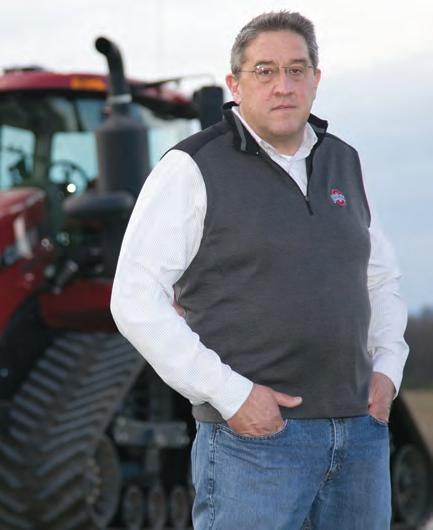
the ability to manage fungicides, insecticides, and nutrients.
FAR technology manager Chris Smith says the biggest challenge for growers adopting precision ag as an everyday tool on farm
has been the perceived cost versus the return on investment. Issues around data transfer and inter-operability between different systems by service providers have also been barriers to adoption.
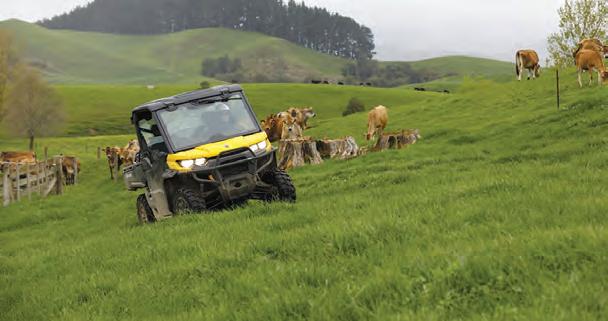
6-ply tires provide added protection. The Outlander PRO’s high strength steel frame is also 35% lighter than its predecessor. A waterproof front storage bin keeps the important things dry, and the new glove box adds even more storage, along with a phone
The EFFLUENT PONDS •Rolls up to 15m wide, therefore fewer joins which means less risk, faster installation and shorter good weather window required. •Design assistance and volume calculations available. •Material warranty from global company - Firestone Building Products.
mount and charger.

COVERTEX SILAGE COVER * This customer elected to use some tyres between his silage and Covertex cover to create a gap due to extreme bird damage he was having previously.
NOTE REDUCED TYRE USAGE!


result of a development journey that began five years ago. •Nationwide Firestone trained and accredited installation contractors. •Future proof - dependable performance, 50 year life expectancy even when exposed, 20 year Firestone material warranty. •Over 120 million square meters installed worldwide. •30 years in the NZ lining business. For your nearest installation contractor call 0800 109 093 Authorised importer and distributor of Firestone Building Products
creating a comfortable and soft surface for the cows to stand on.
FARM
WAIKATOmanager Grant McLaggan knew he had a problem two years ago when a few pushy cows ended up in the pit of his 30-aside herringbone milking shed.
Cows were pushing to get to the feed bins at the bails, causing hoof injuries to some and a few unlucky ones ending up inside the pit.
“We were getting a lot of lame cows. Cows just came flying in, became pushy and started slipping,” he told Dairy News
Grant’s dad and farm owner Lance McLaggan started looking around and bought a few samples of rubber mats. Two years ago, the McLaggans opted for Kura mats from NumatAGRI. An area of about 180 square meters of the milking parlour is now covered in Kura mats. By installing purpose-built rubber matting, they have been able to minimise slips and reduce the number of hoof injuries.
Kura mats cover the herringbone bails, as well as the entry and exit into the milking shed. The specially designed mosaic grooved pattern on the top of the mats provides the required grip to minimise slipping, while
Grant says the days of cows falling into the pit are over. The number of lame cows has dropped and cows are much happier coming in and going out of the milk shed.
“There are less cows falling into the pit; I think we’ve had one cow slippage in the last two years,” he says.
“Lame cows are no longer a problem either. The last thing we need is trimming feet and dealing with lame cows.”
An added benefit of a rubber surface is less time and energy spent on cleaning and hosing down the surface in their shed.
“We found the product good for being able to clean easily. It’s a lot easier to hose out on the mat than it is on the concrete.”
The rubber mats have also helped regulate cow flow and created a more relaxing environment for milking.
“Cows just seem happier coming into the shed. You’re not worried about them slipping up, other cows trying to jump over the top of them. They’re just really surefooted. Once they get in, to milk, they stand there very comfortably.”
Along with the rubber matting on the herringbone bails, they

